Reliance Motor Car and Truck Company
GENERAL MOTORS TRUCK COMPANY
Detroit and Owosso, Michigan
Last Update: 1-09-24......
This is a personal website owned by Steve Schmidt.
Copying any photos and information is prohibited.
Copyright 2024 - All rights reserved
Reliance Motor Truck Company
was actually born in Detroit Michigan as the Reliance Motor Car company in about 1904.
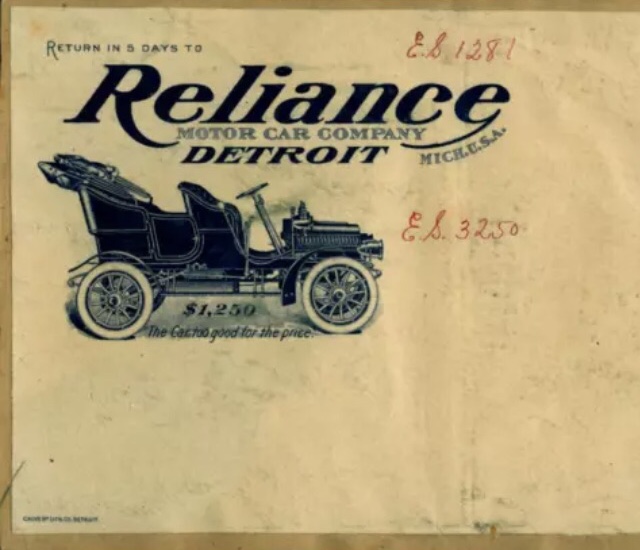
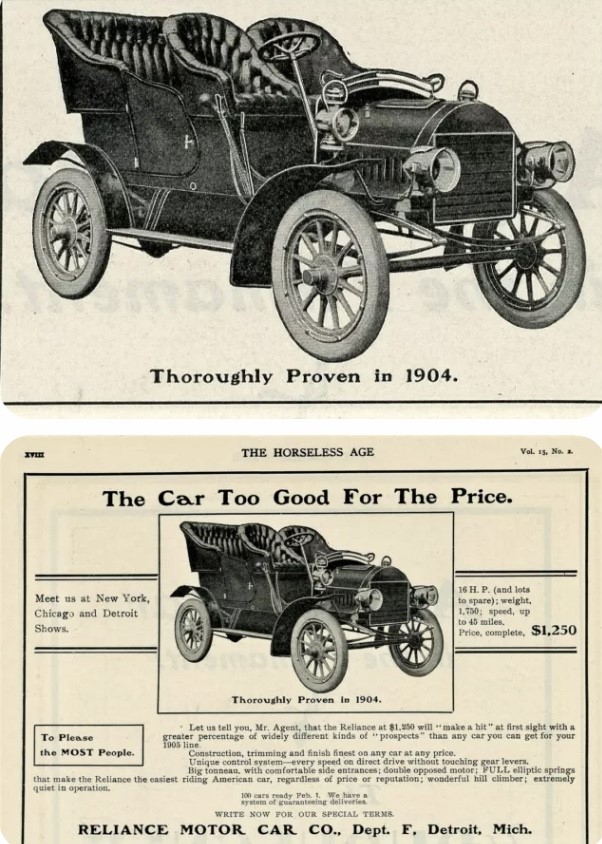
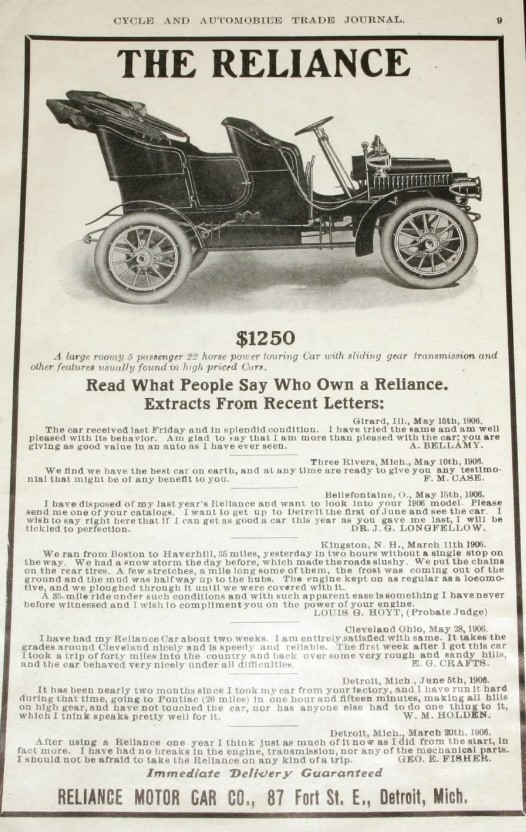
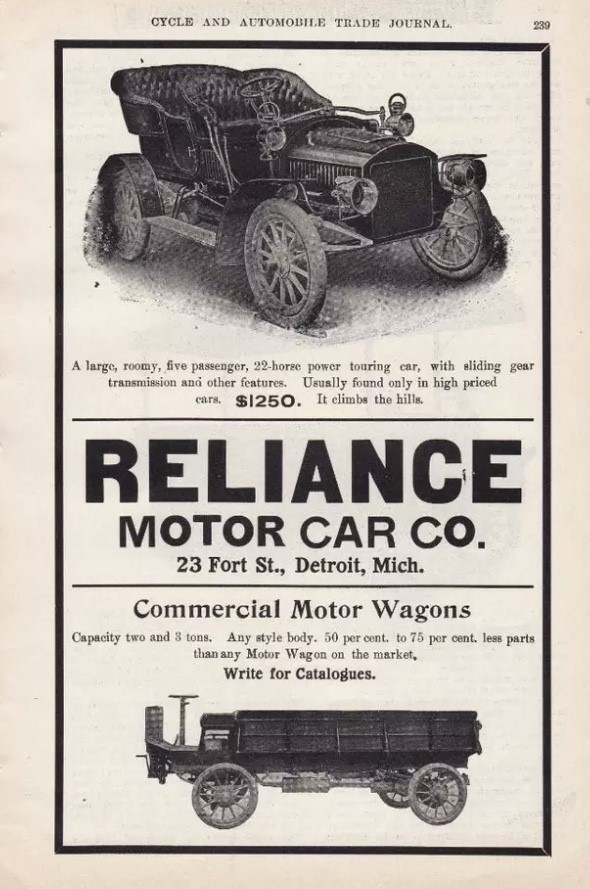
Below is the sales 1905 brochure.
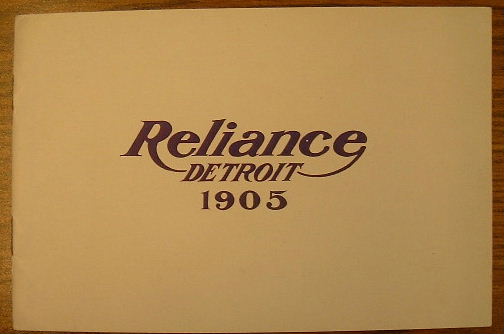
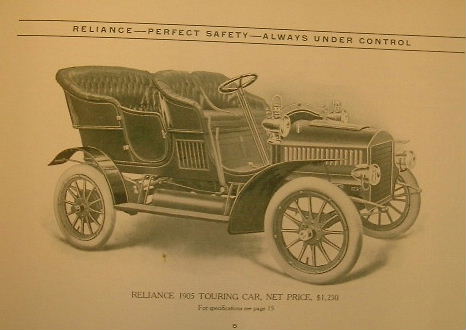

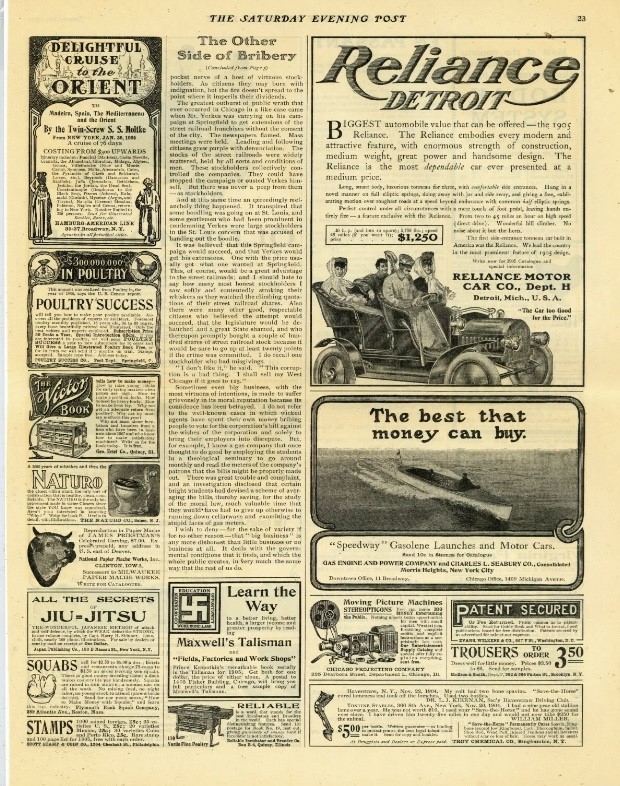
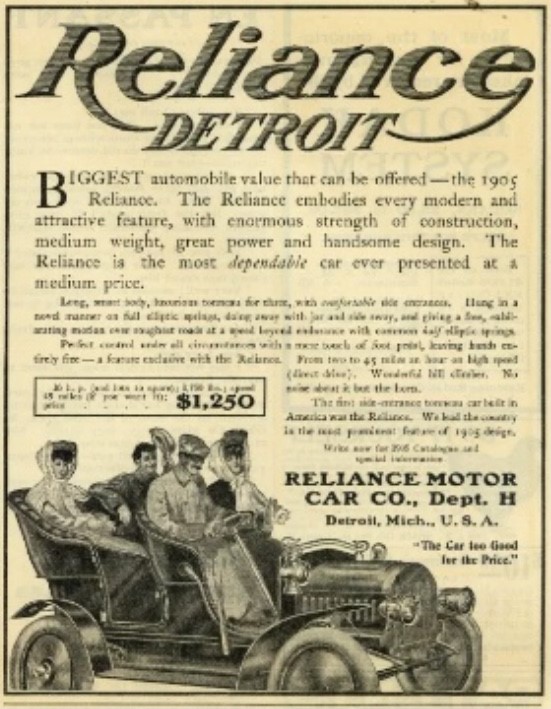
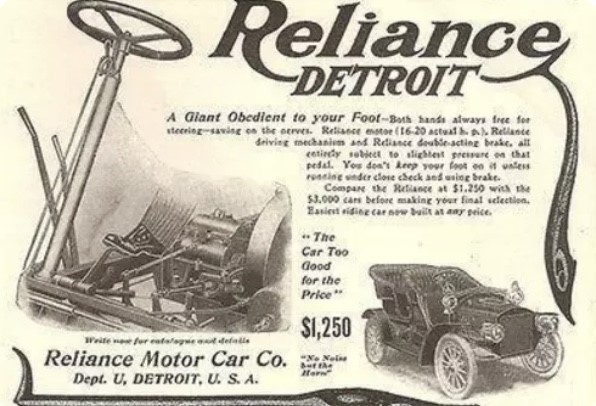

Below.....1906 Reliance Car Ad
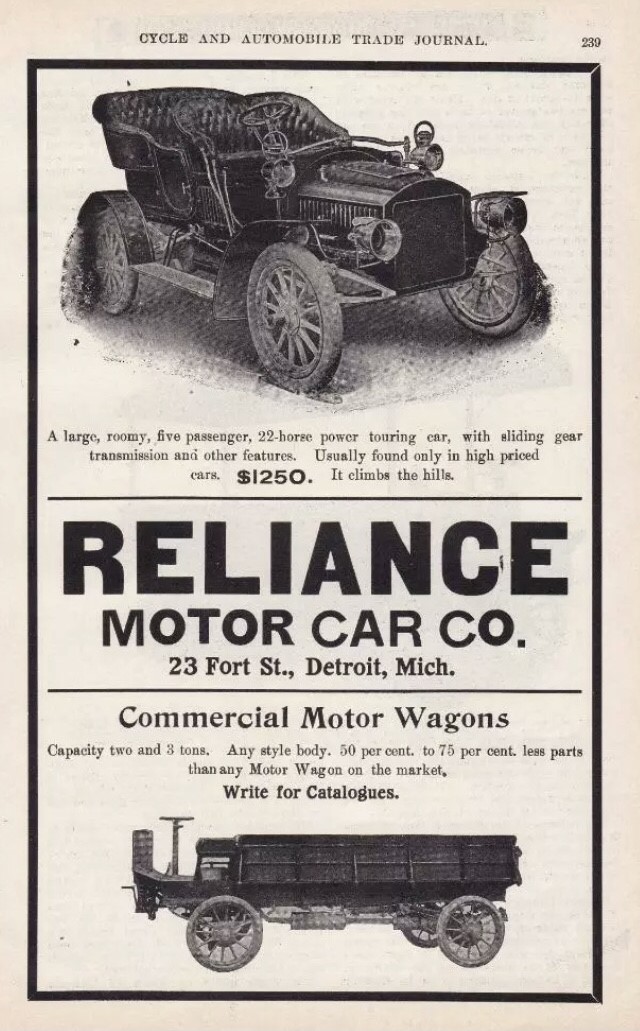
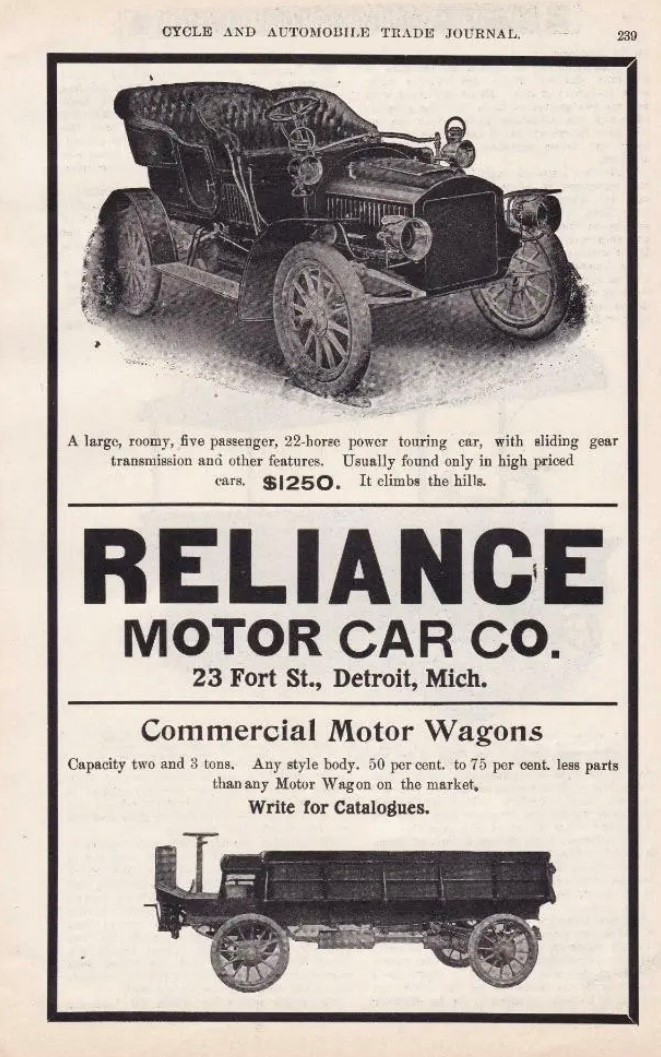
Below....1906 Reliance Truck
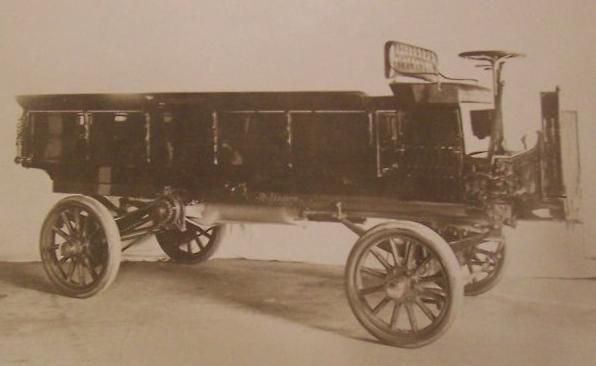
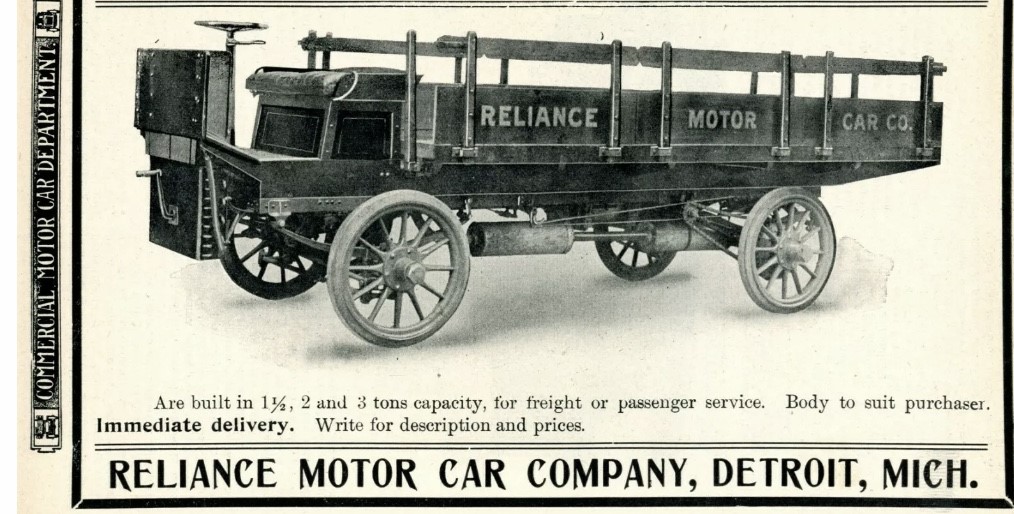
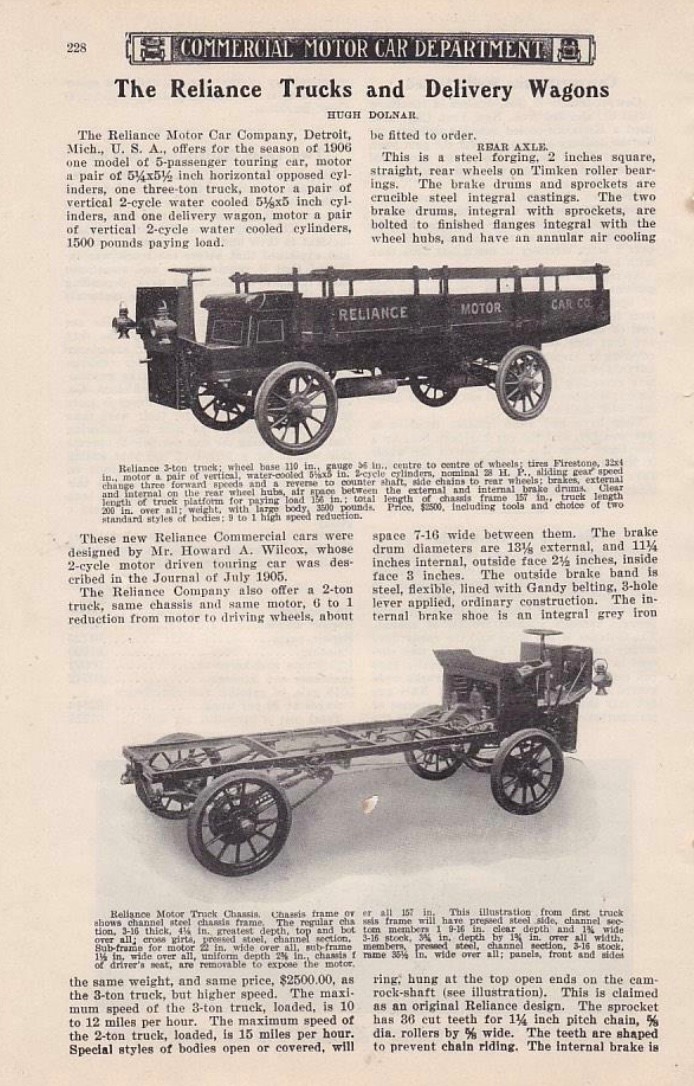
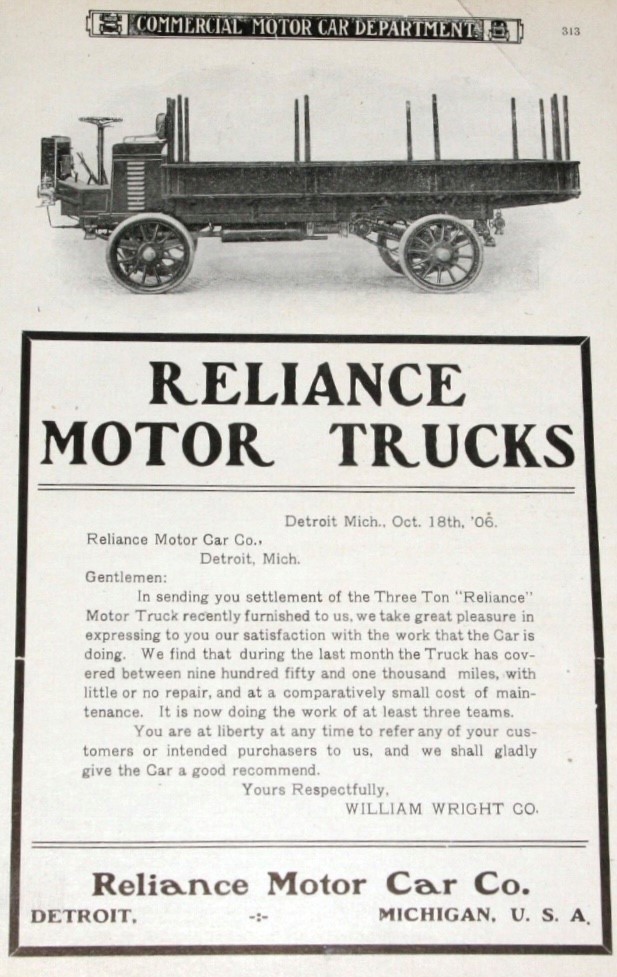
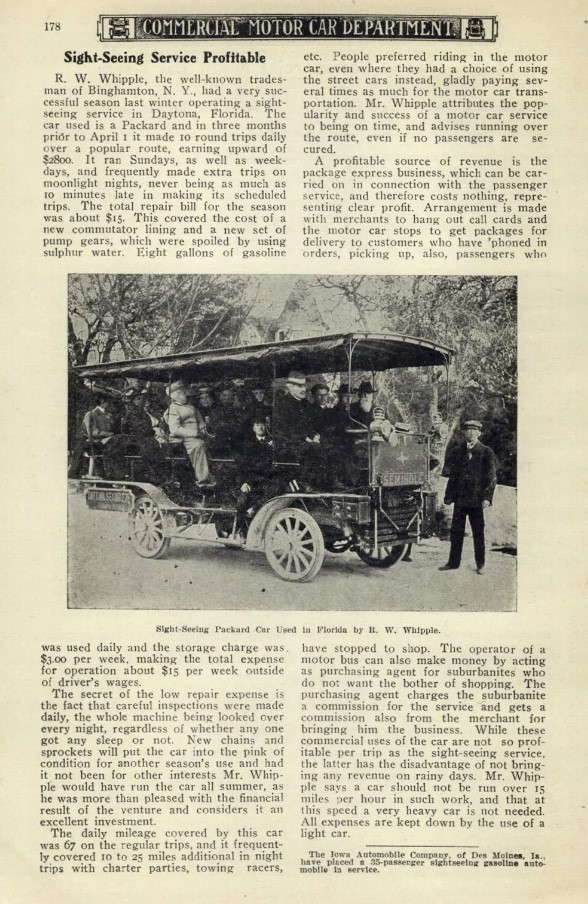
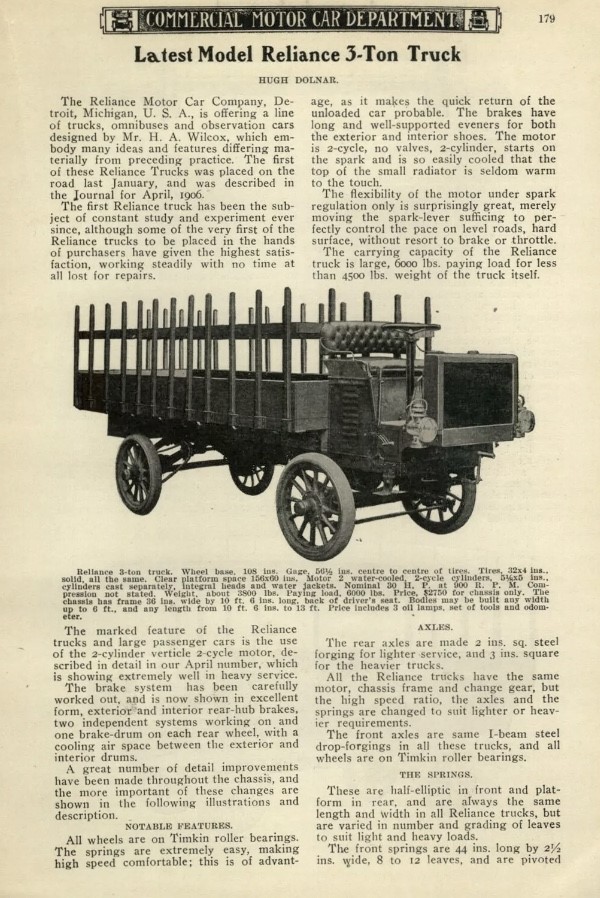
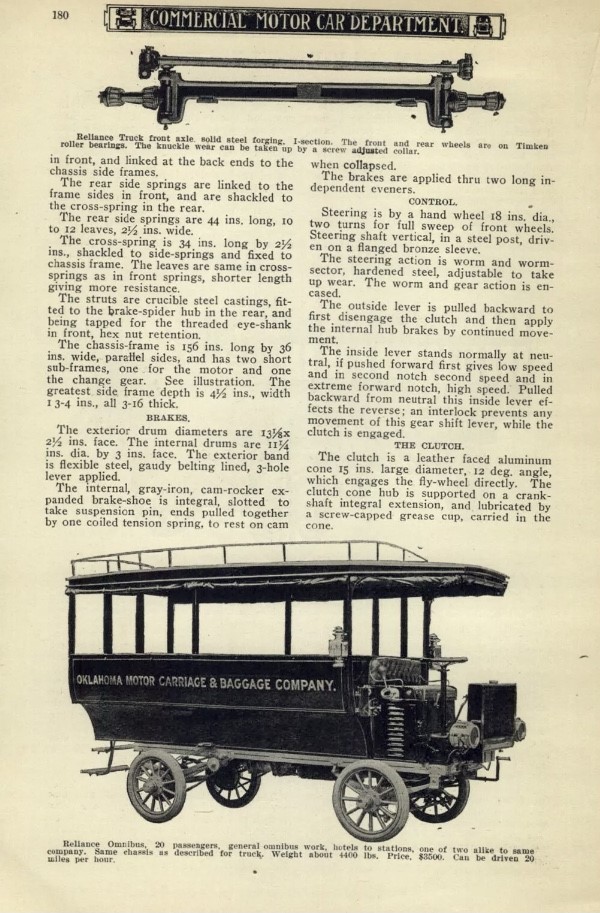
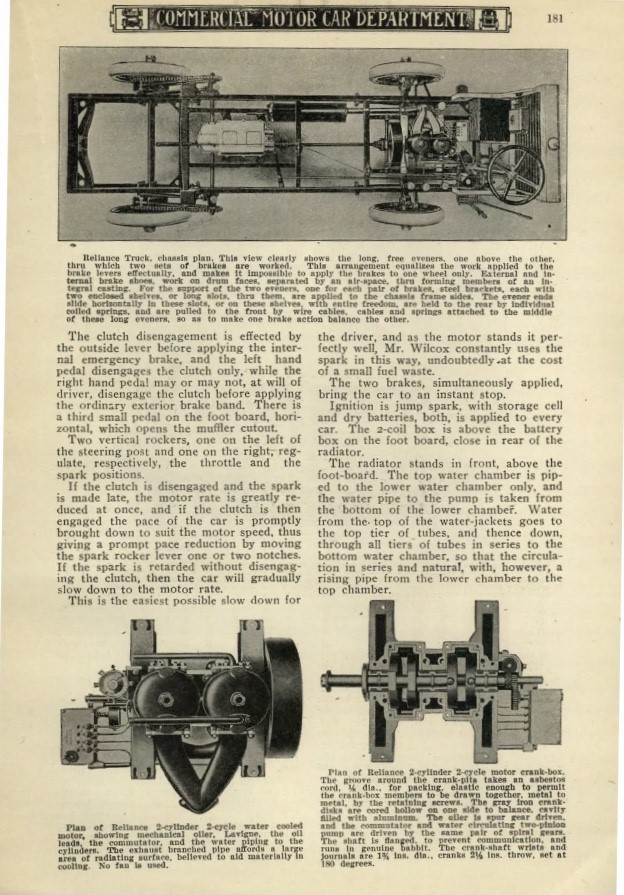
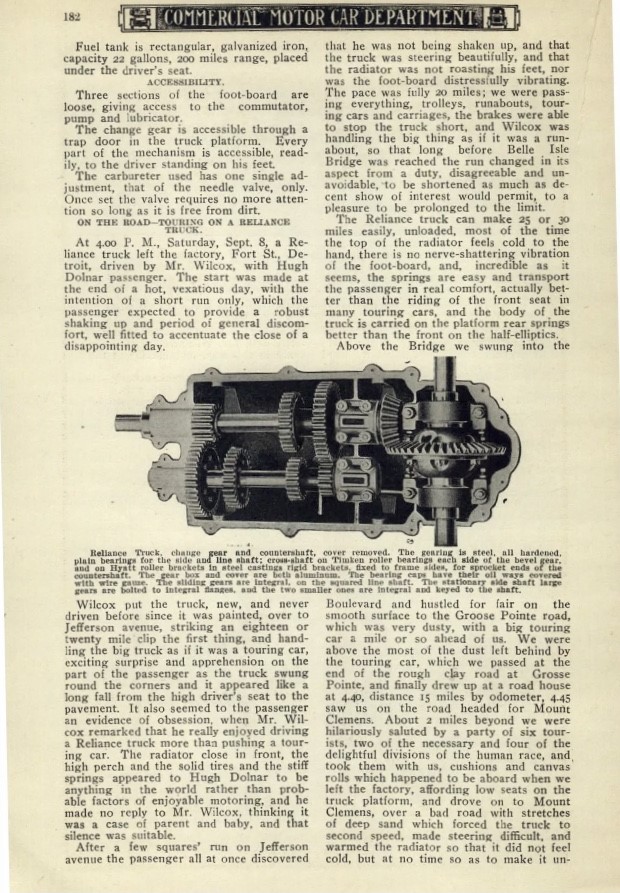
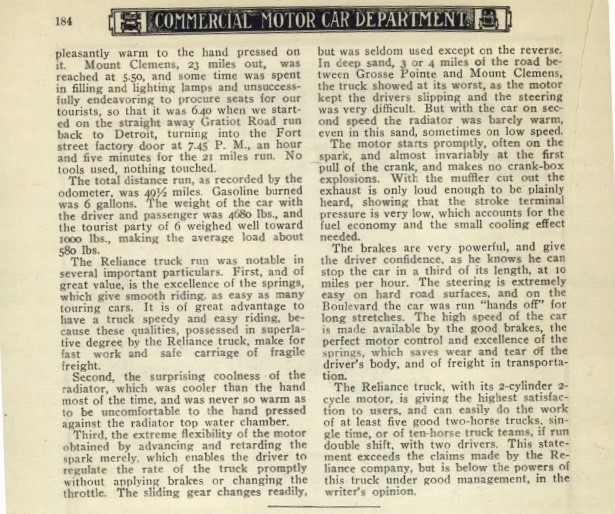
Below is a 1907 Reliance truck
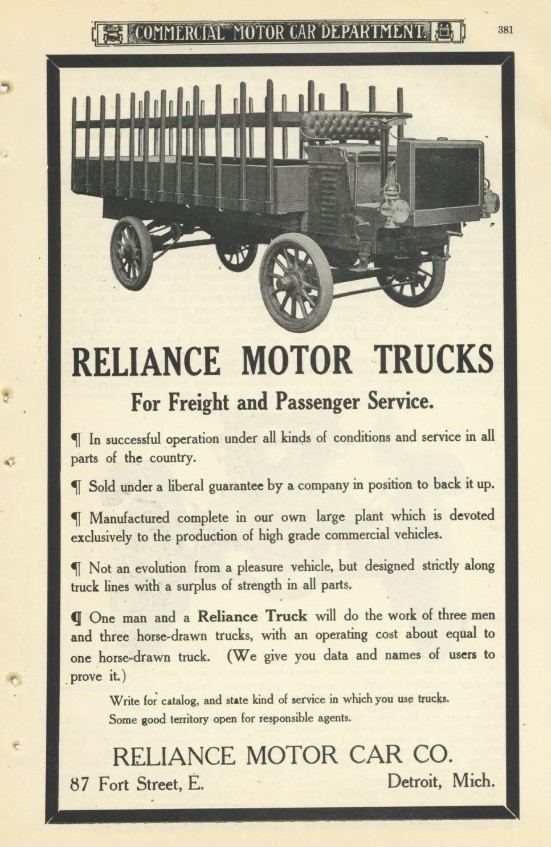
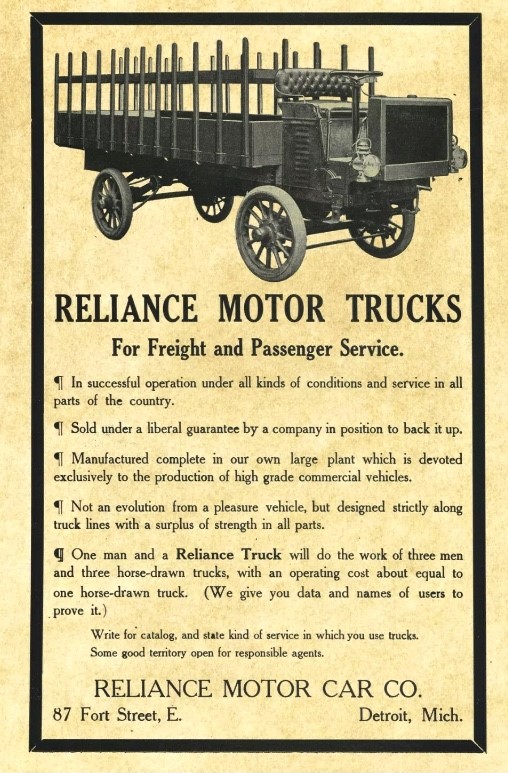

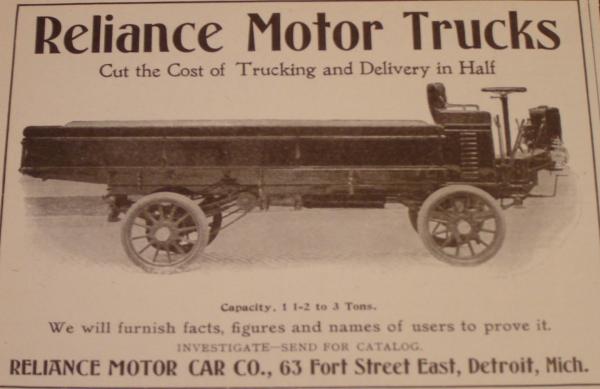
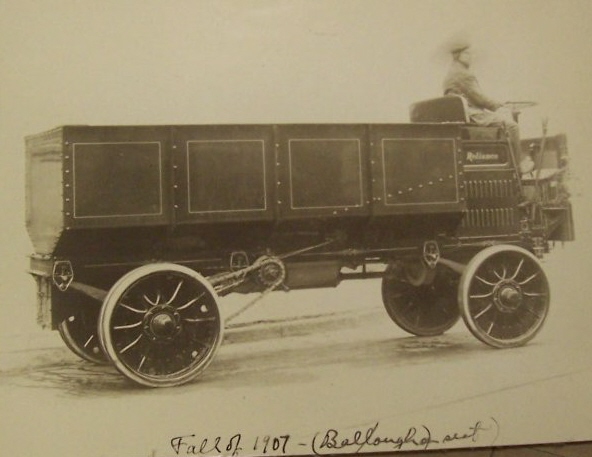

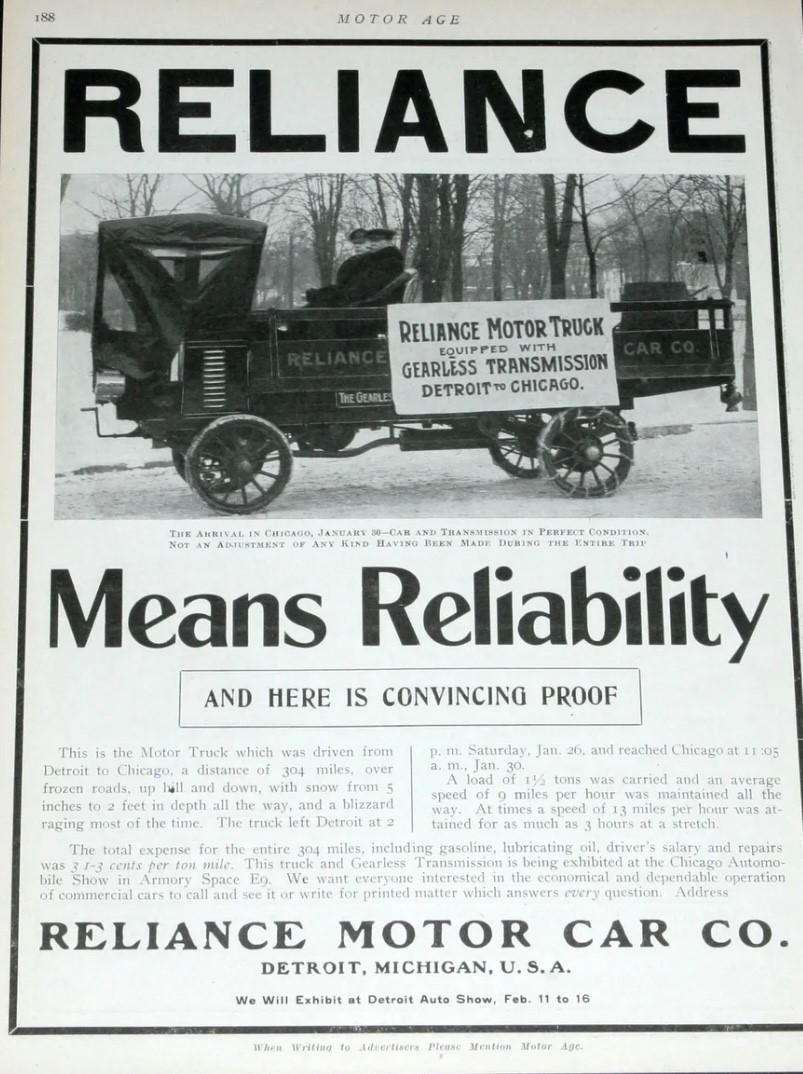
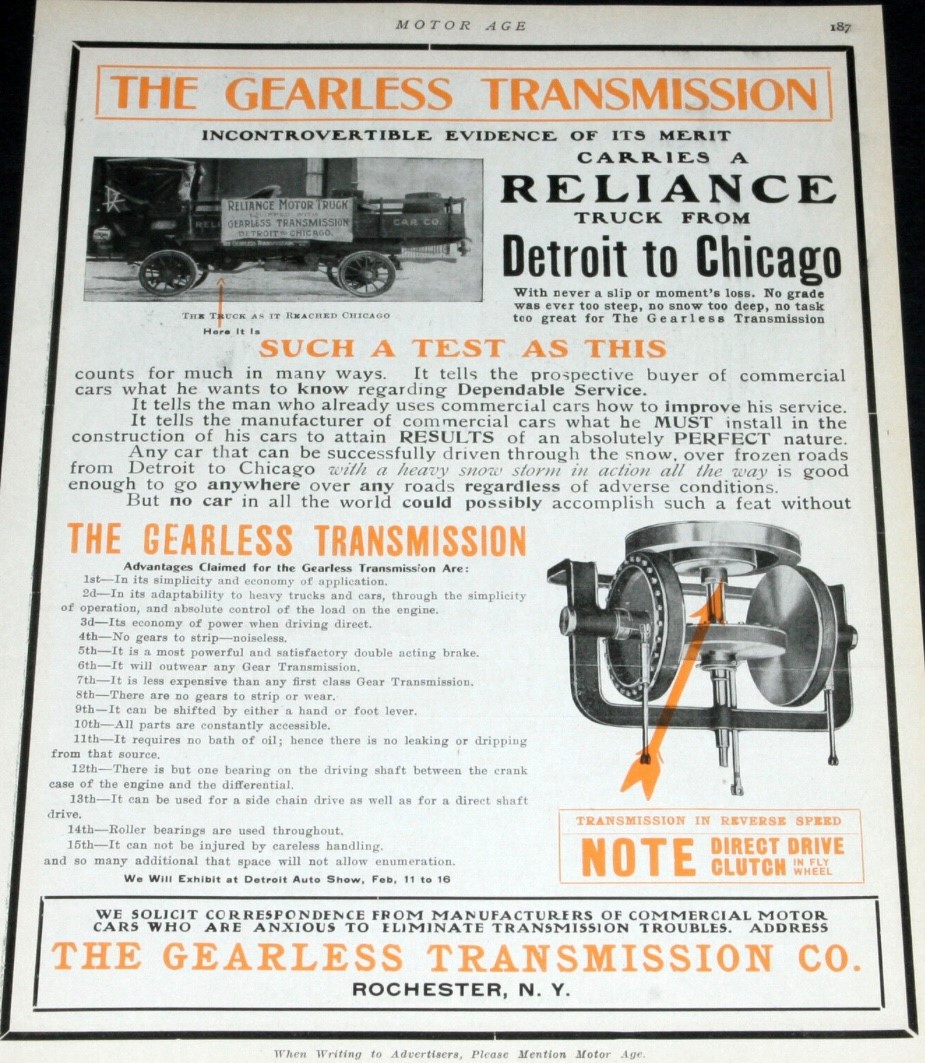
Below is a 1908 Reliance toy
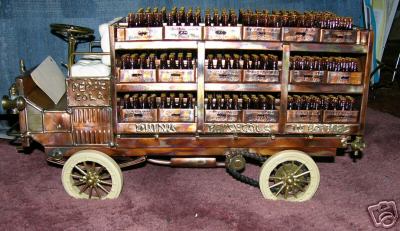
Below is the 1908 Reliance Truck catalog
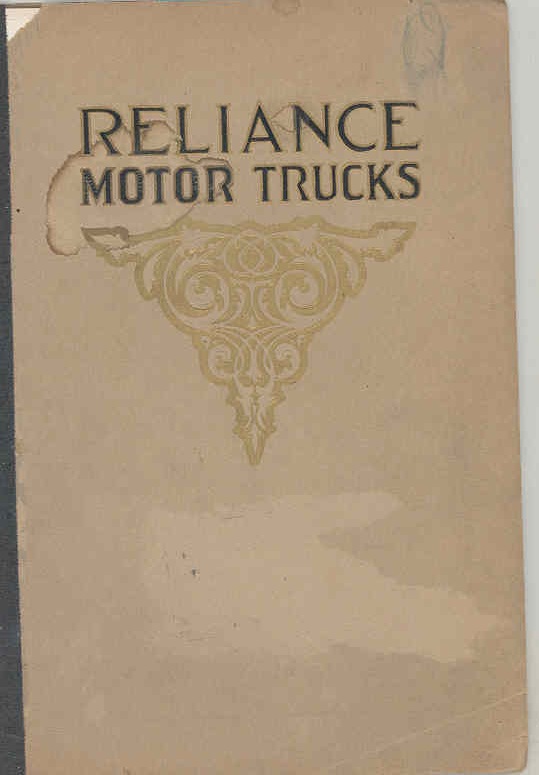

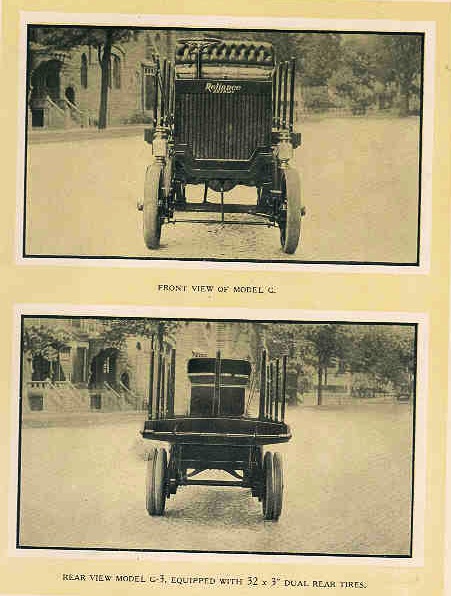
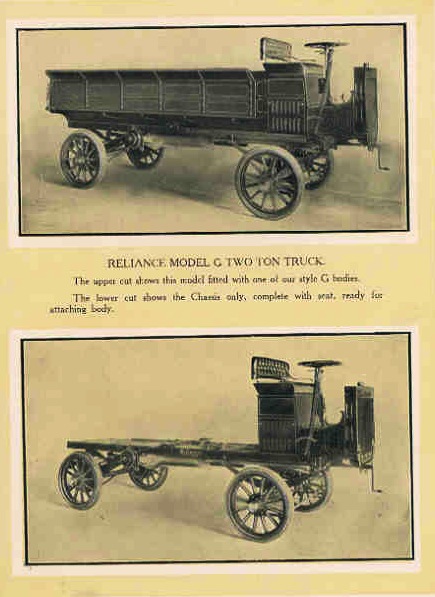
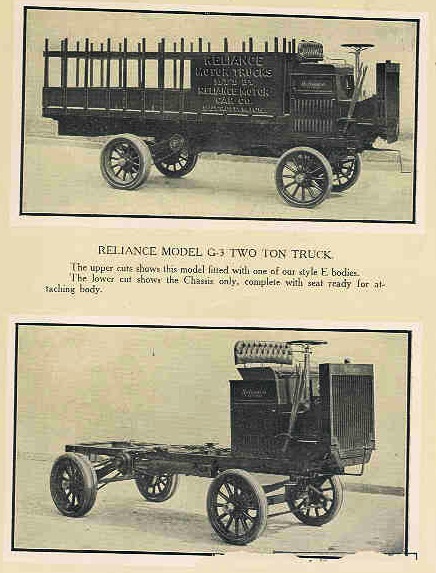
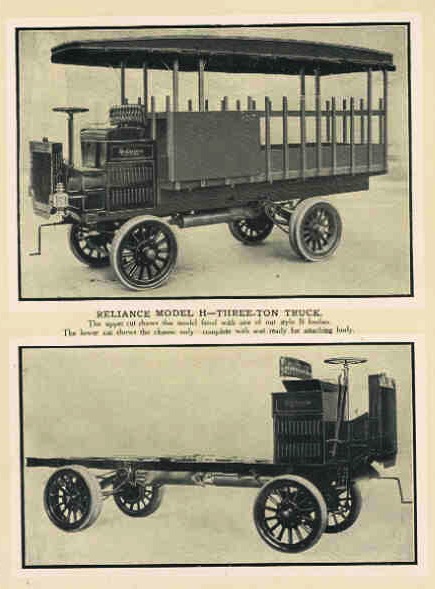
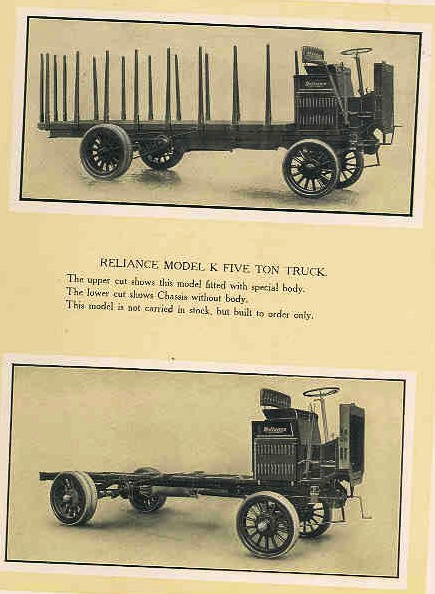
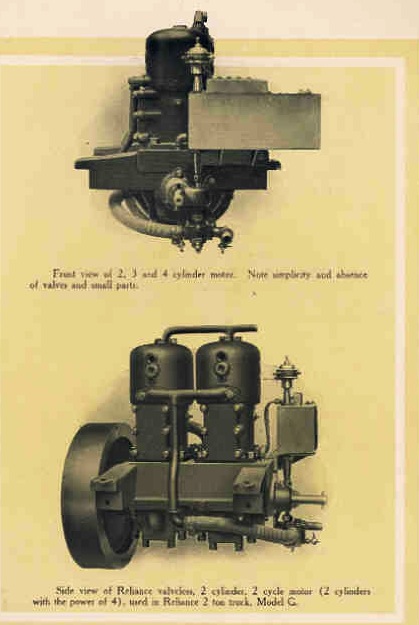
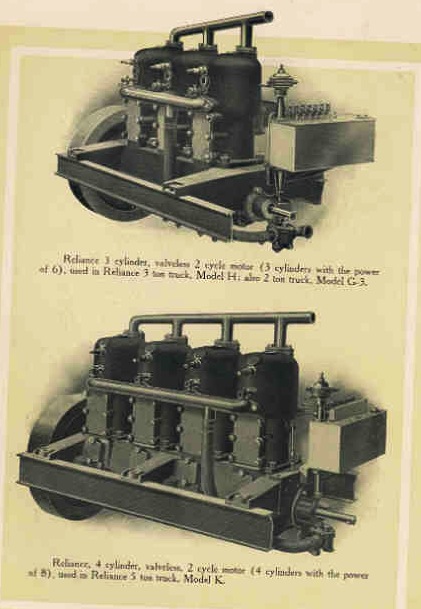
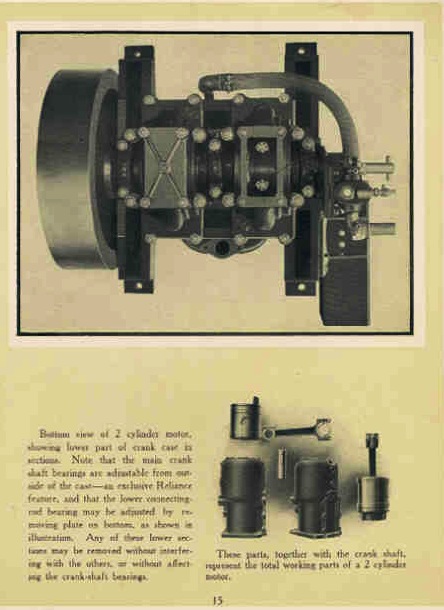
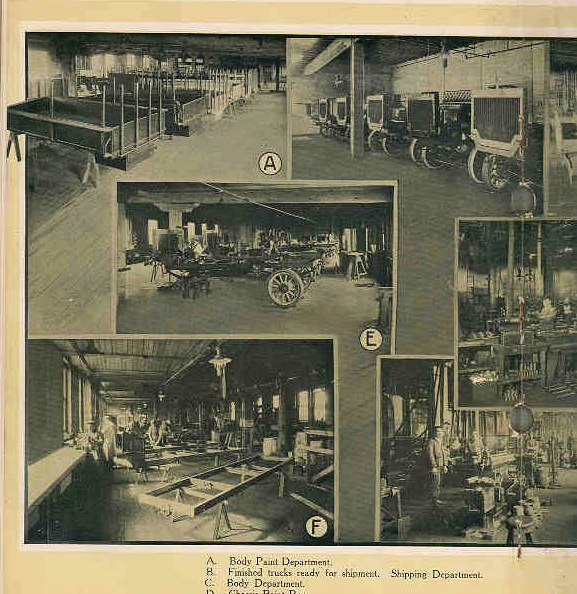
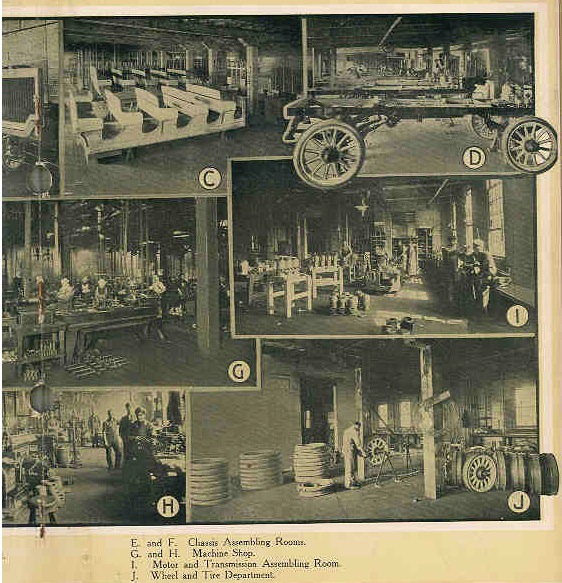
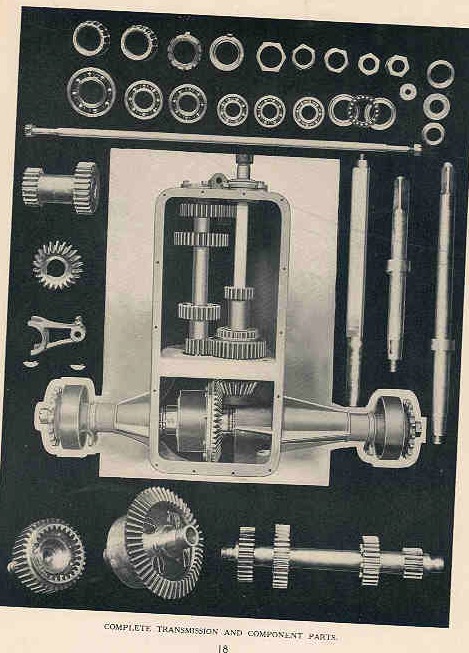
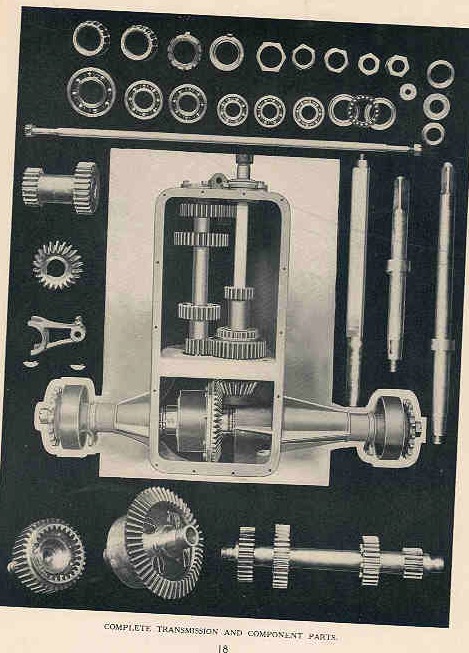
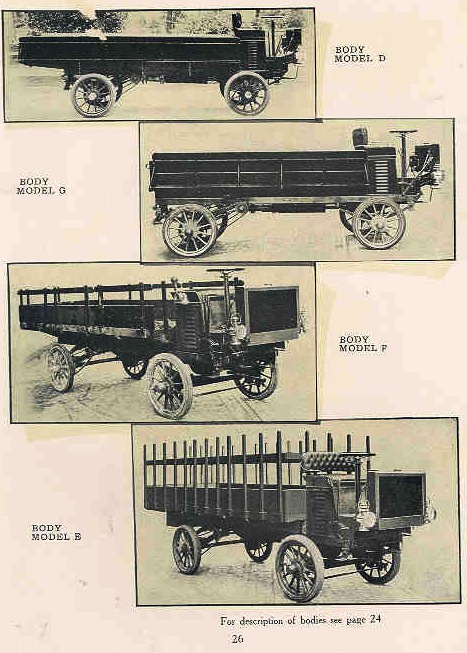
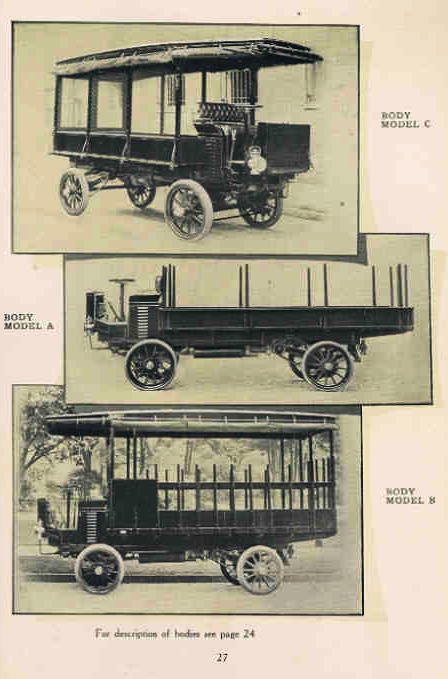
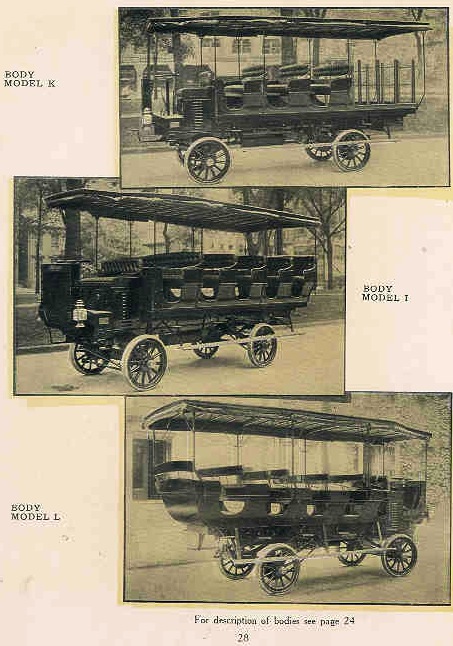
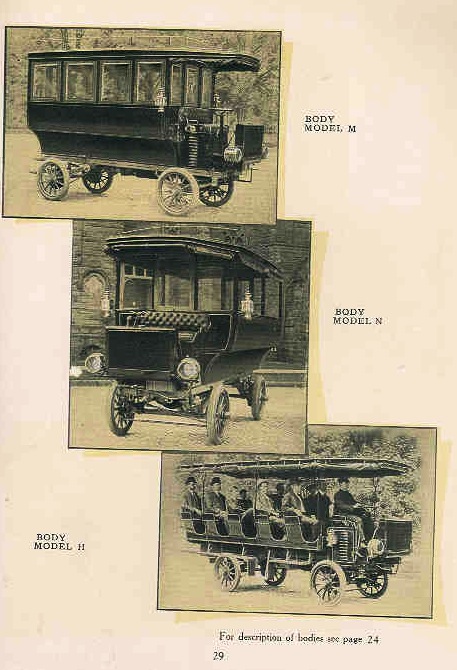
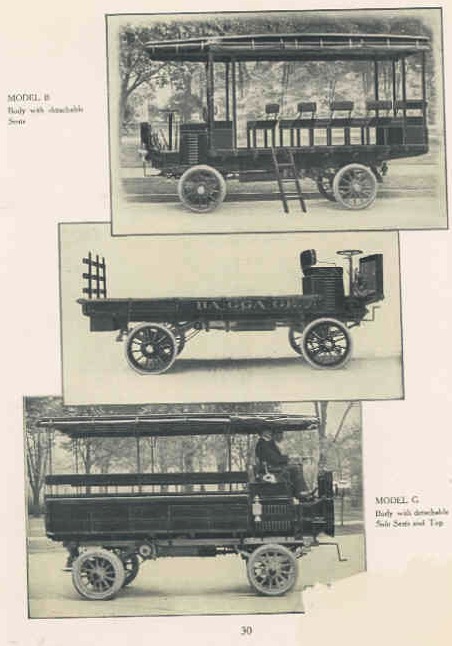

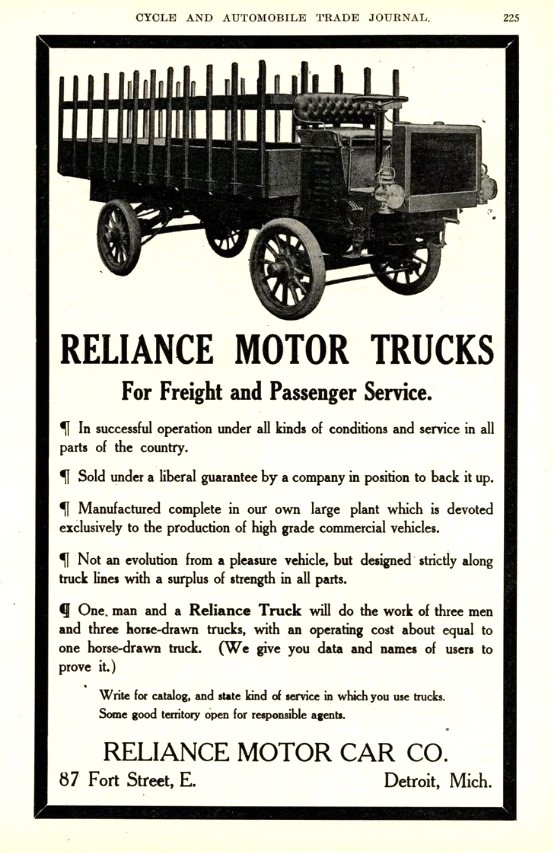
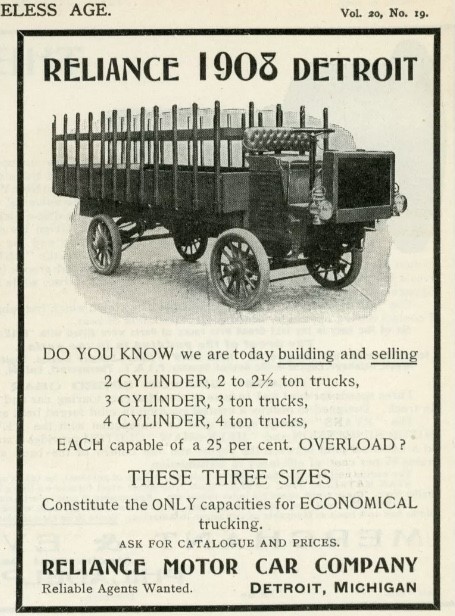
In 1909, the Reliance Truck, Randolph Truck and Rapid Truck Companies were combined into one company by William Durant,
who bought them to add to his collection of automotive manufacturing companies.
Once part of GM, these truck companies operated under a sales umbrella called the General Motors Truck Company.
The Reliance Truck was the heavy duty model of the GMC line and it was moved to Owosso, MI.
1911 Reliance model H
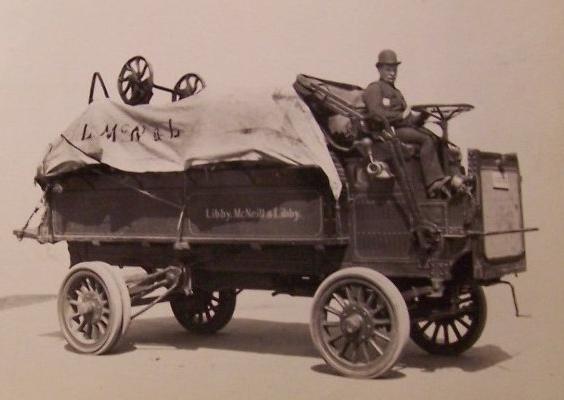
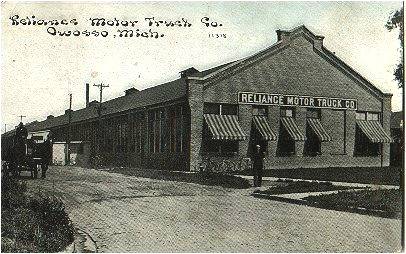
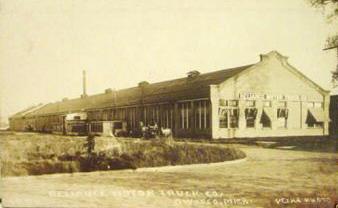
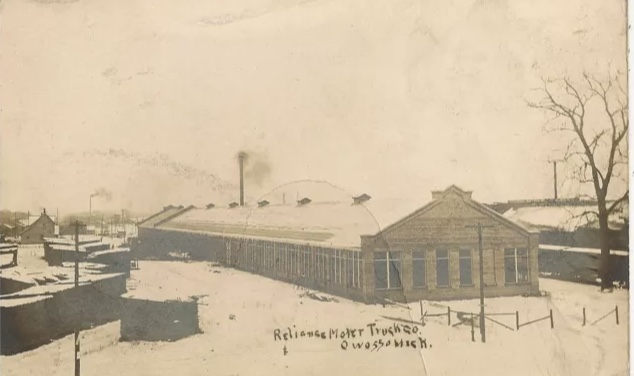
Reliance Motor Truck Factory on Michigan Ave. (1909-1912)
Mr. A.M. Bentley, of Owosso, got in on the ground floor of General Motors and served on it's board of directors.
In 1908, he managed to get a $30,000 grant from the City of Owosso to entice Mr. Durant to build a truck plant there.
By 1909, trucks were rolling out of the Owosso plant. They were two ton models which actually were the heavy duty
model of GMC line and they had a two cylinder, two-cycle engine, which was made in northern Michigan. The truck had
a sliding gear transmission and was chain driven and sported hard rubber tires. By February 1912, the trucks left
Owosso with the GMC logo on them.
In June of 1910, Bentley announced in the Owosso Argus Press, the building of
a new factory for the GMC Truck headquarters. They would need to hire 1000 men and he said the City needed to find
housing for the new employees. However, by September, all of the grand plans had been changed. Pontiac, Michigan
would become the GMC Truck World Headquarters and the rest is history.
1909
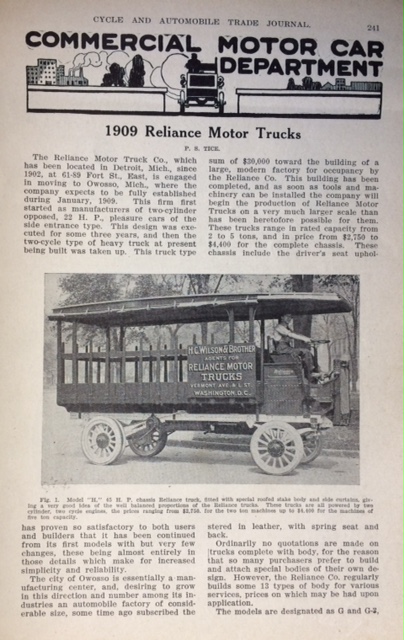
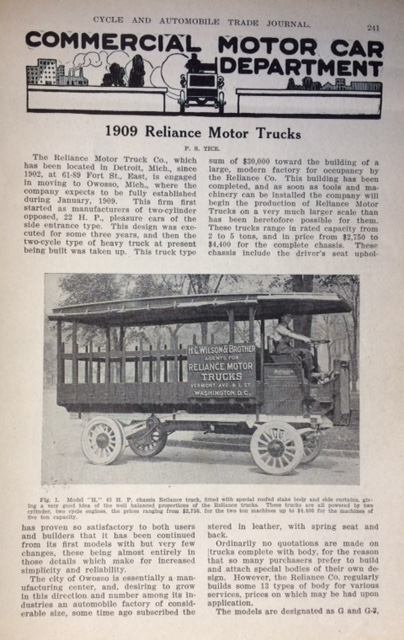
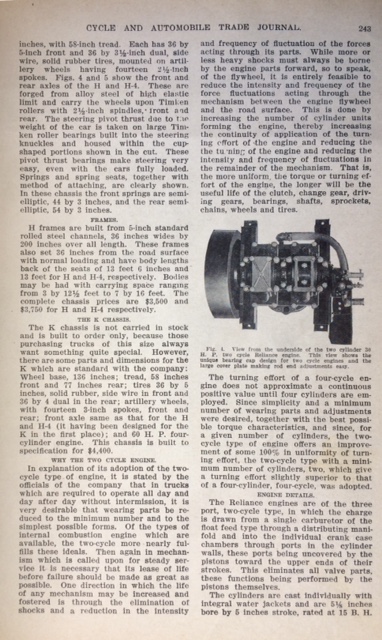
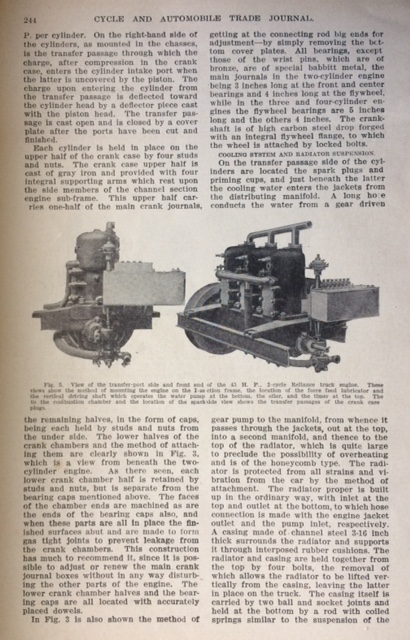
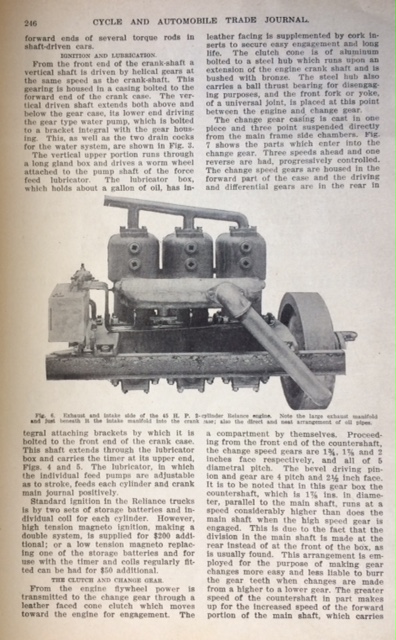
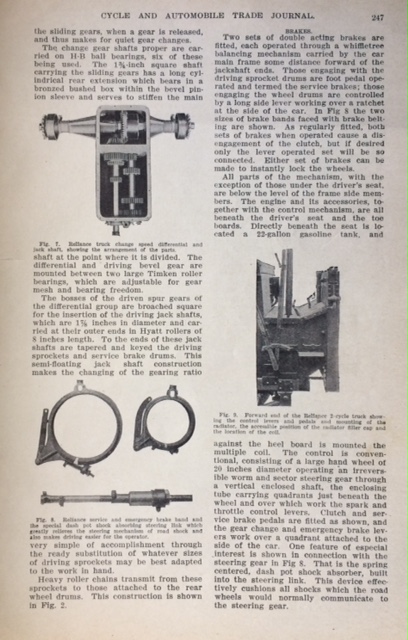 Below, 1909
Below, 1909
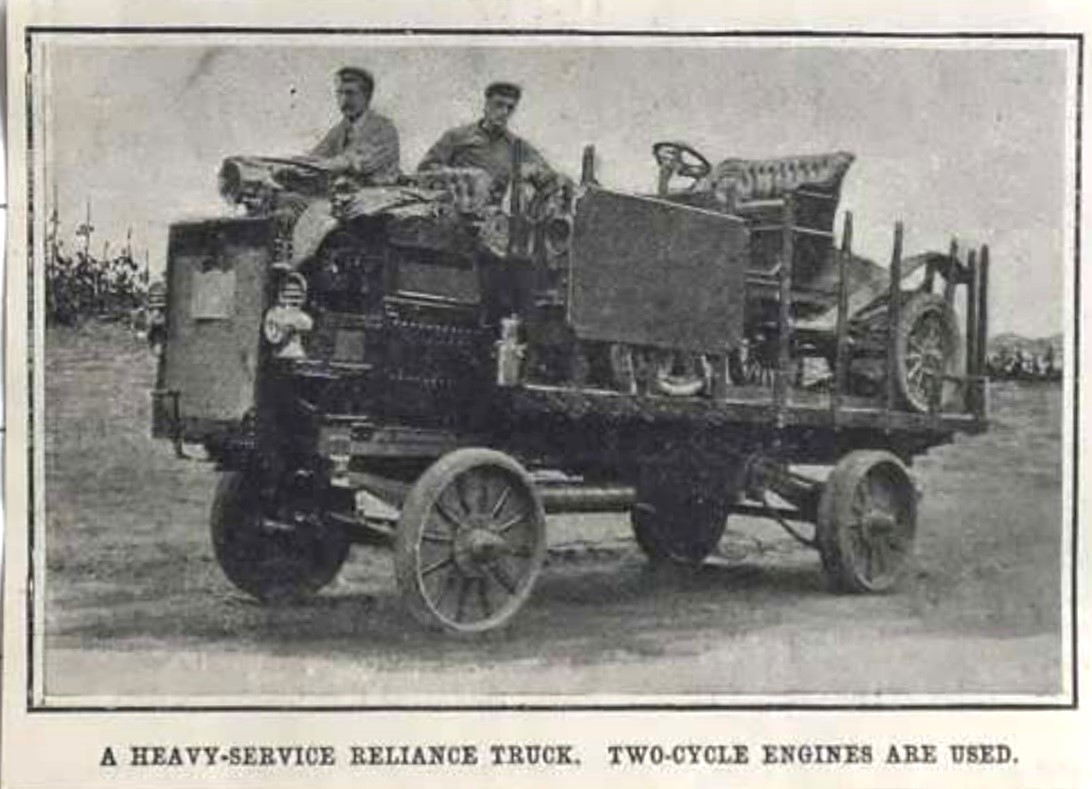
1910 Reliance catalog
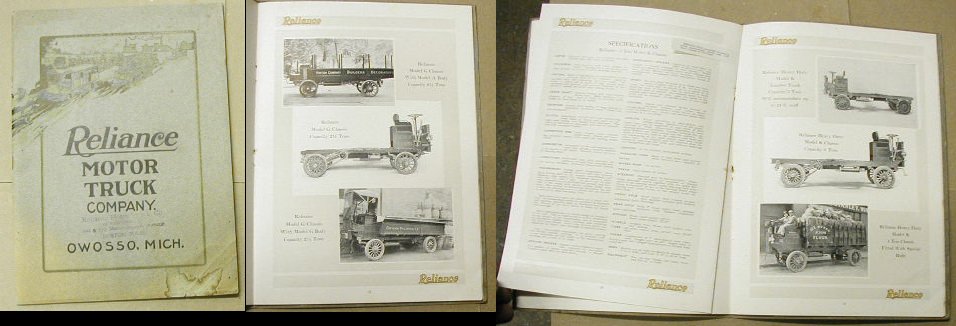
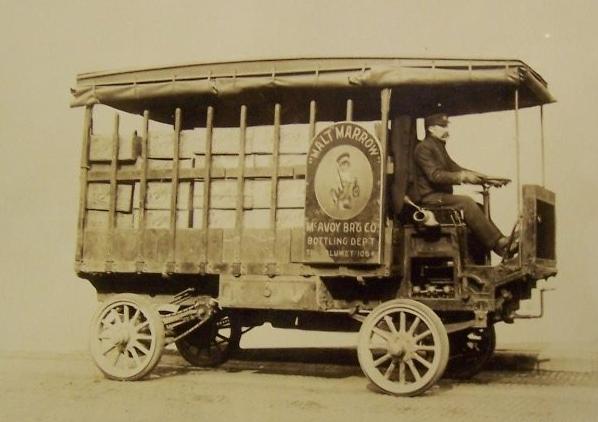

Below, 1910
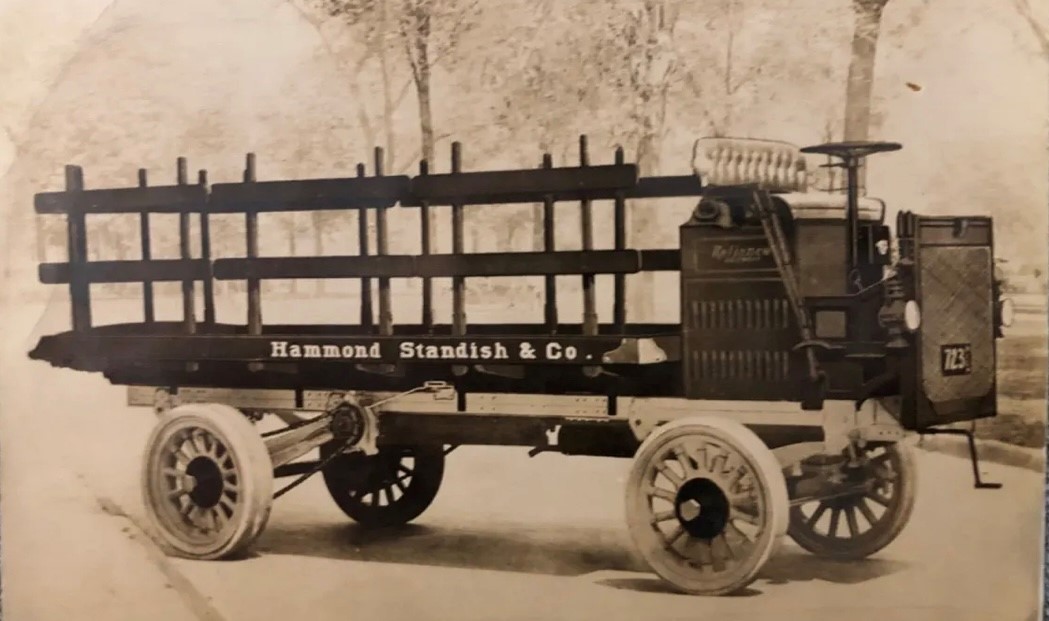
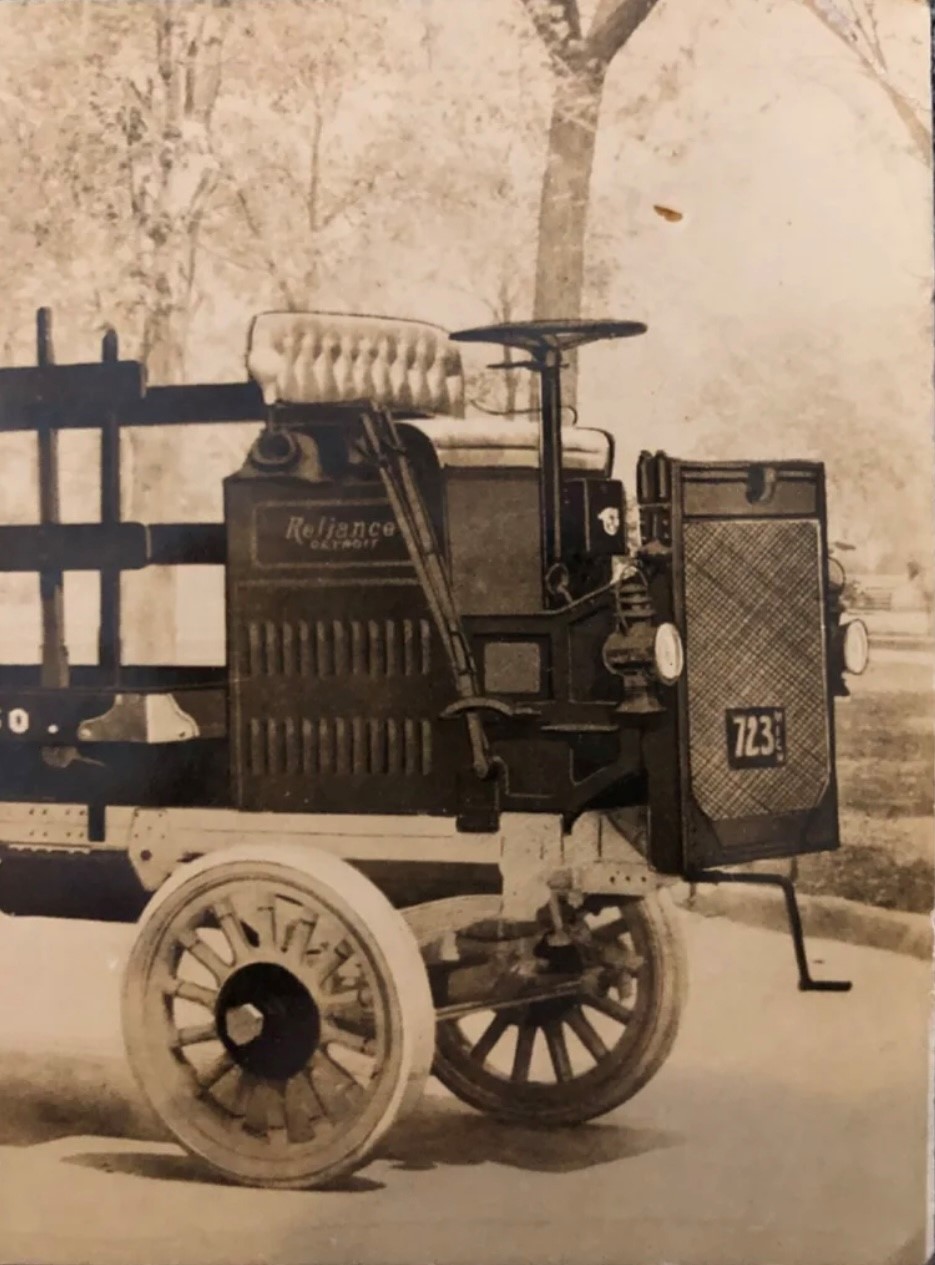
Below, group of Reliance trucks in 1911
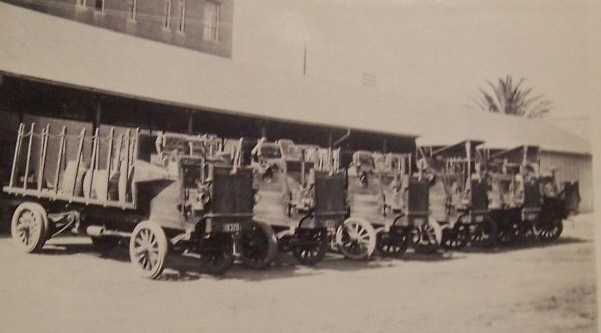
Below is a 1911 model
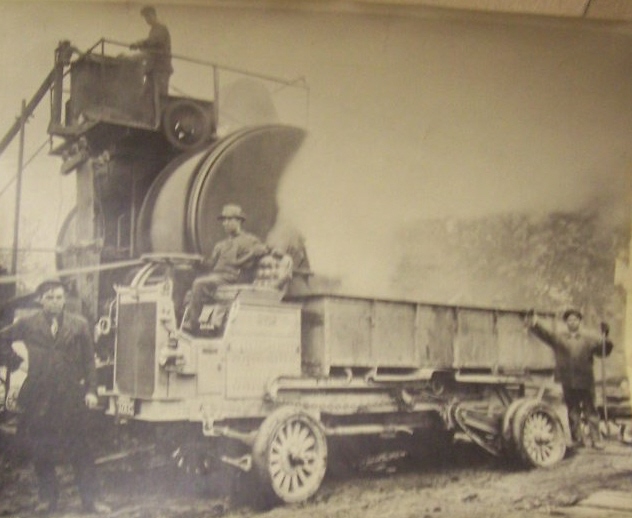
Here is a 1911 Pepsi-Cola Wagon making a delivery
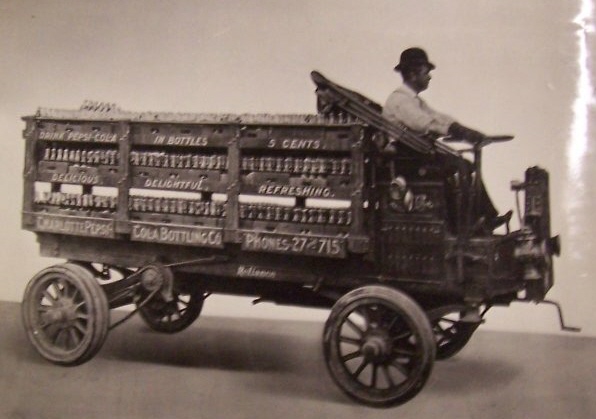
1911 model Reliance Stake bed
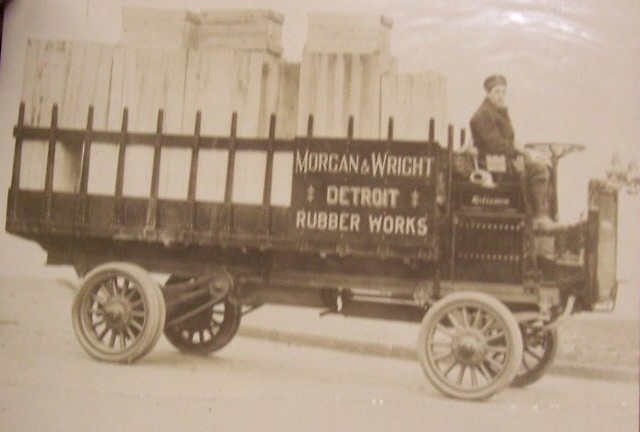
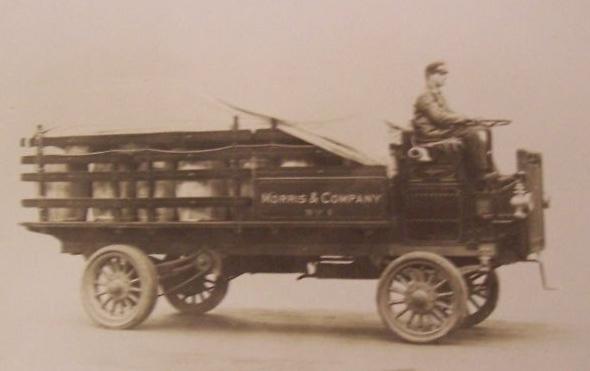
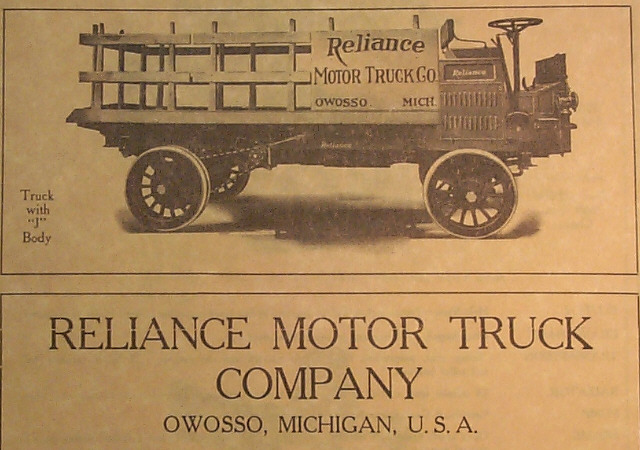
In 1911, Reliance Motor Truck was the first truck equipped with Pneumatic Tires. These were developed
and built by the United States Nobby Fabric Pneumatic Truck Tires. Wright and Morgan was the Detroit
distributor.
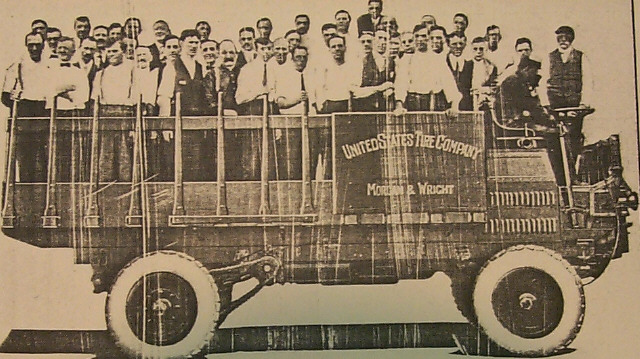
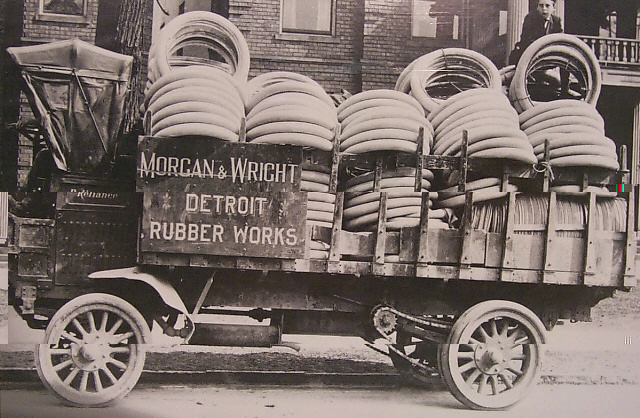
Many truck manufacturers in the early 1900's were always looking for publicity and truck races
seemed to draw public attention. And if your truck won the race, such as the Detroit to Chicago Race,
your truck sales would sky rocket.
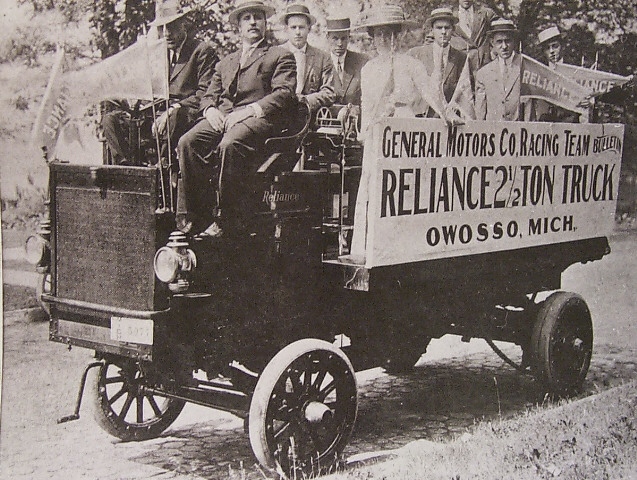 Notice the lone women sitting behind a machine of some kind. Could it be for making bulletins or press
releases? If you recognize the mechanial device, please e-mail me.
Notice the lone women sitting behind a machine of some kind. Could it be for making bulletins or press
releases? If you recognize the mechanial device, please e-mail me.
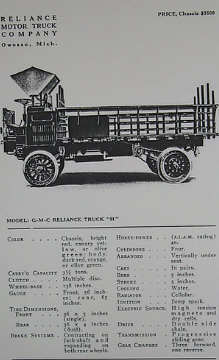
1912 A.L.A.M. advertisement that clearly shows the
Reliance model.
1911 Reliance catalog
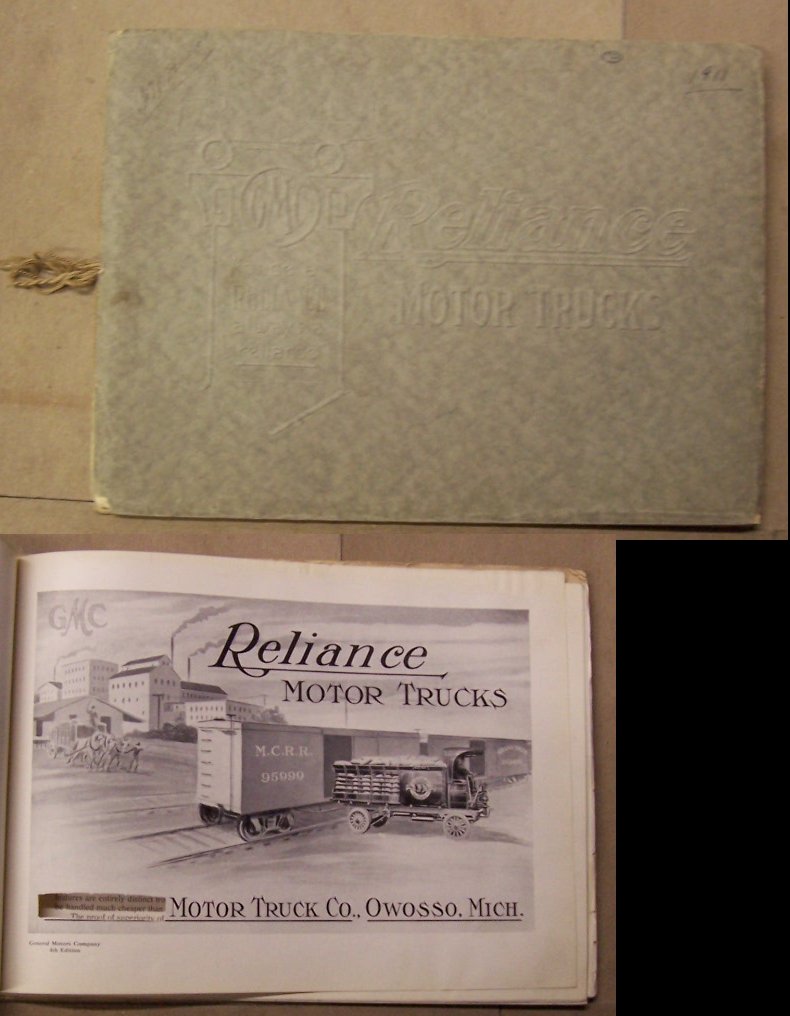
Notice the Michigan Central Railroad box car at Owosso
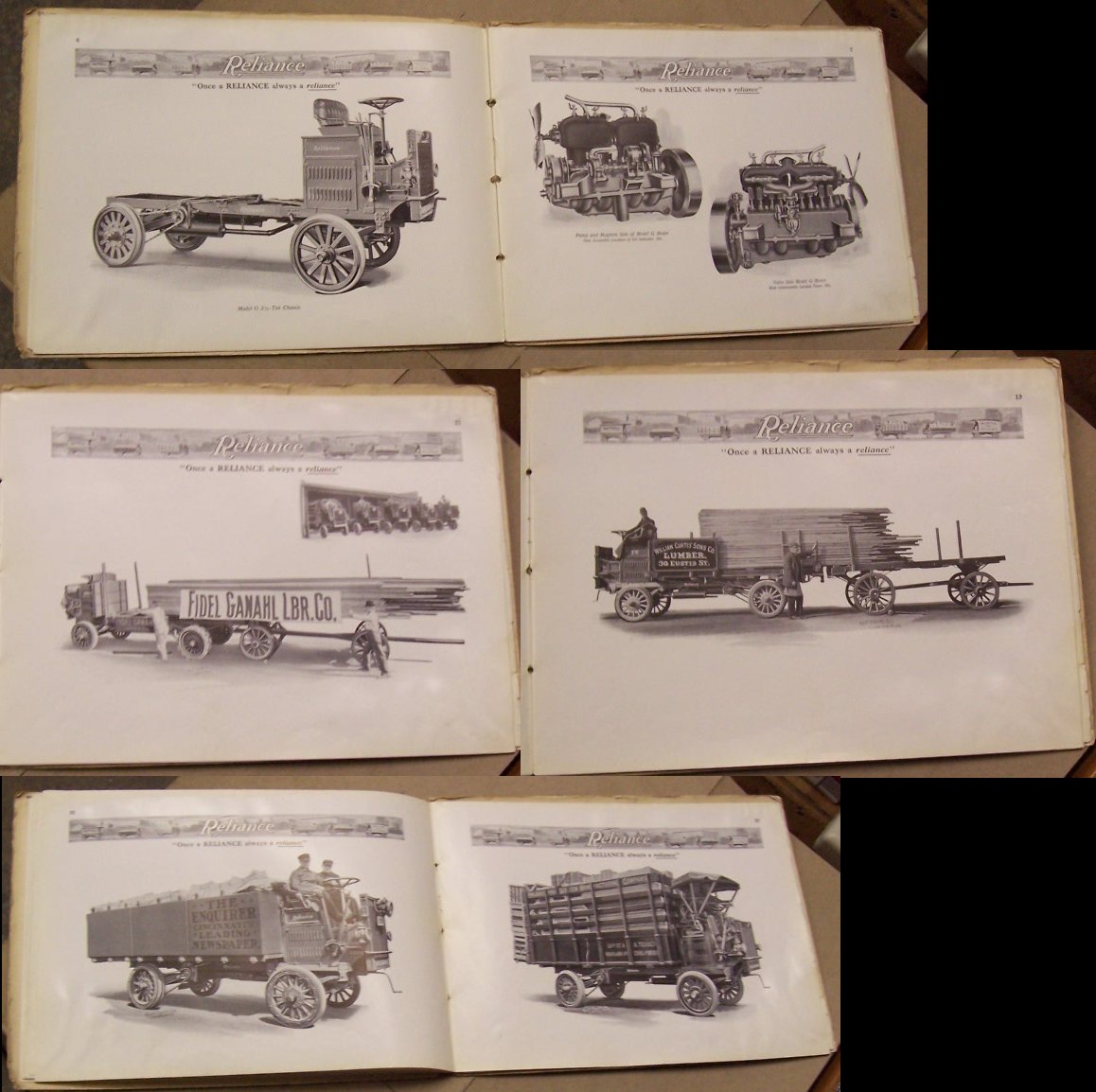
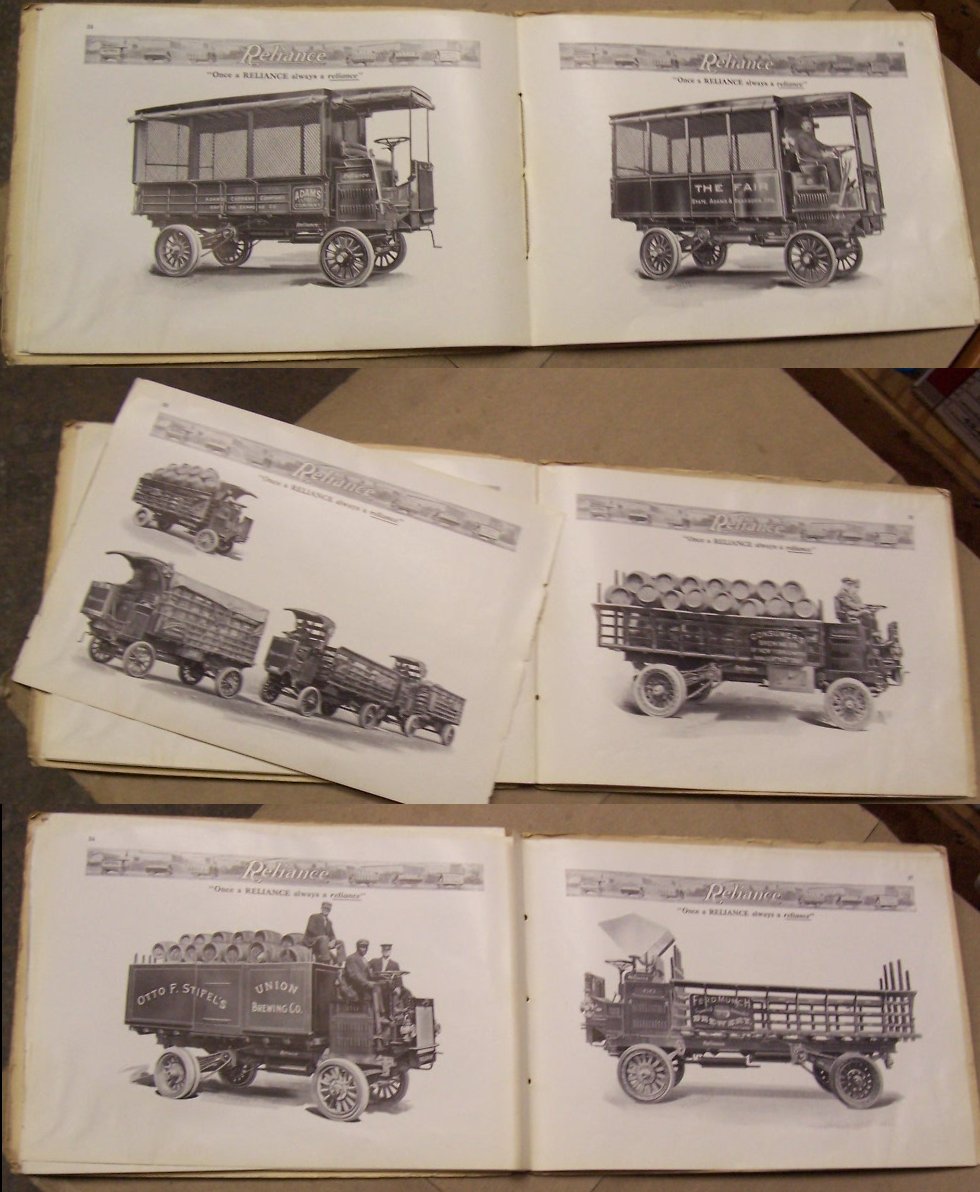
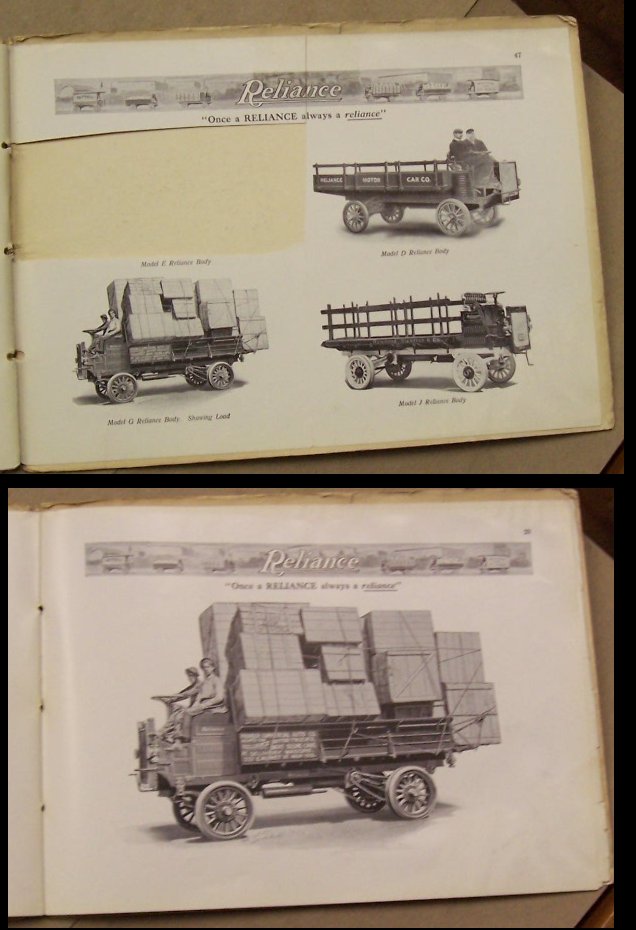
1912
In 1912, after Durant had been forced out of GM, the new management decided General Motors Truck Co.
would assume responsibility for both sales and manufacturing. Reliance production was moved from Owosso to
Pontiac and joined with that of Rapid. Gradually the lines between the two became blurred and their names
were dropped in favor of the GMC trademark.
1912 Reliance with coal dump box
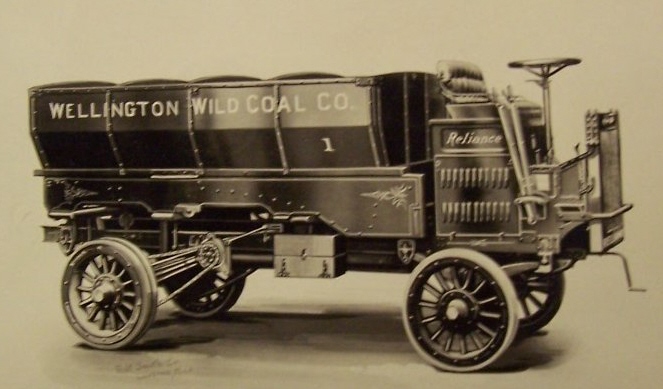
Circa 1912 Reliance with furniture moving van. Remember the steering wheel is at 8' tall, so this is a large
truck.
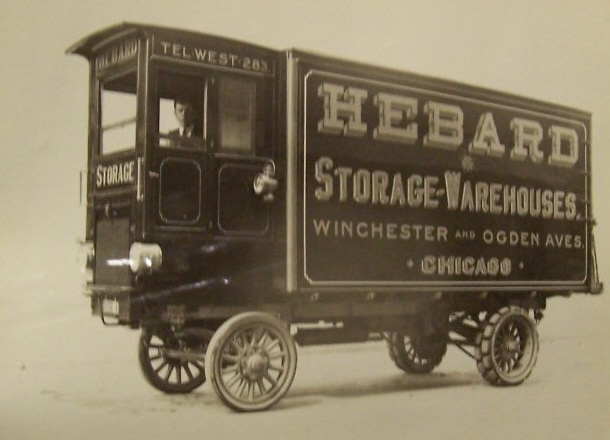
Below....1912 Reliance model H
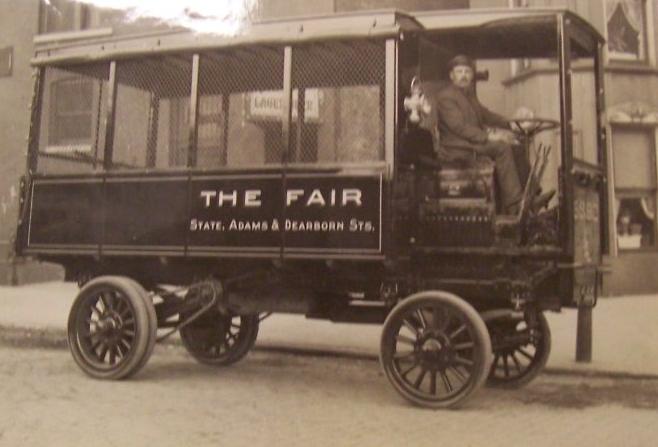
1912 chassis
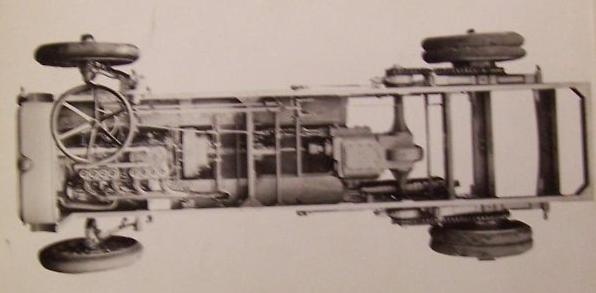
1912 model H Dump
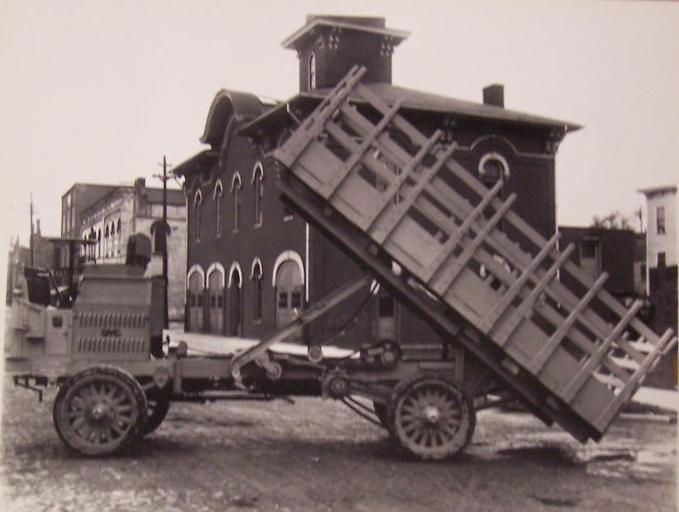
1912 GMC catalog
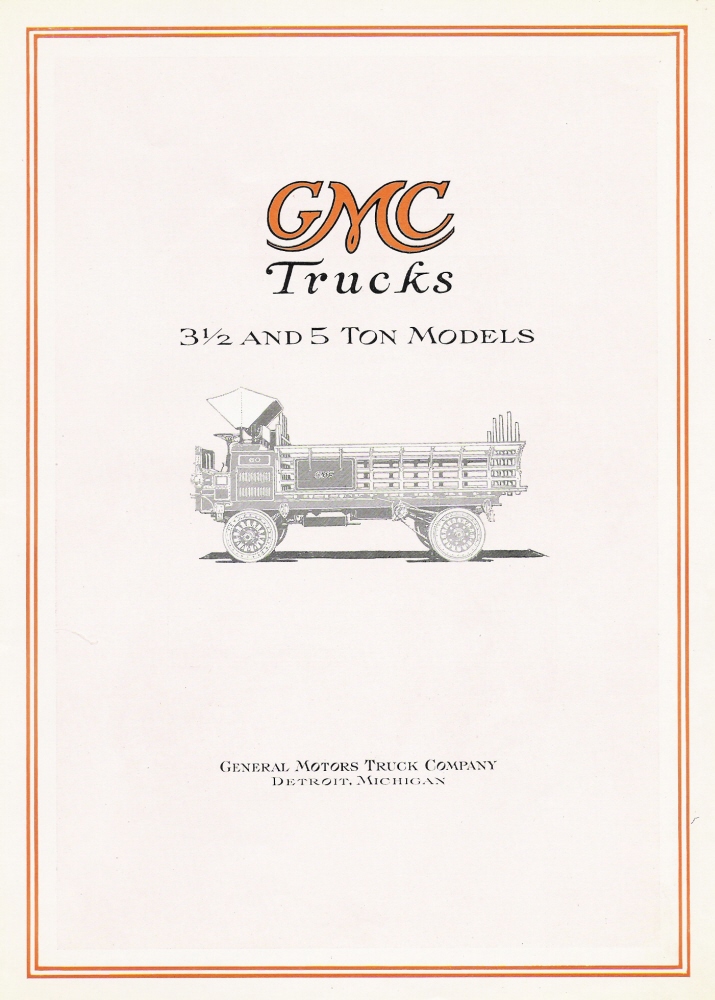
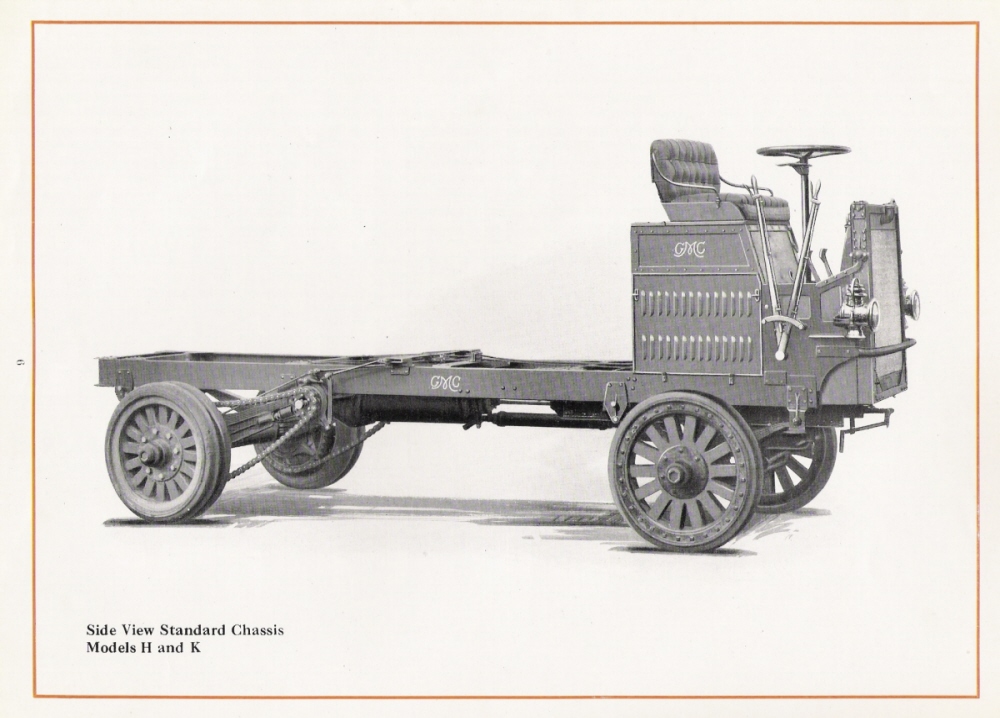
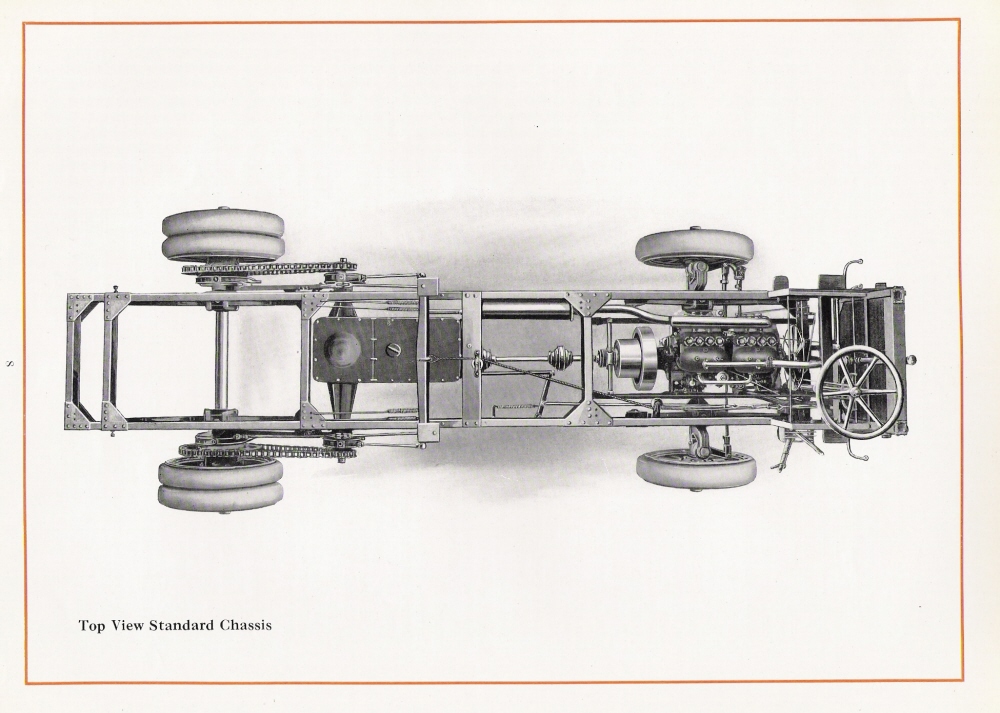
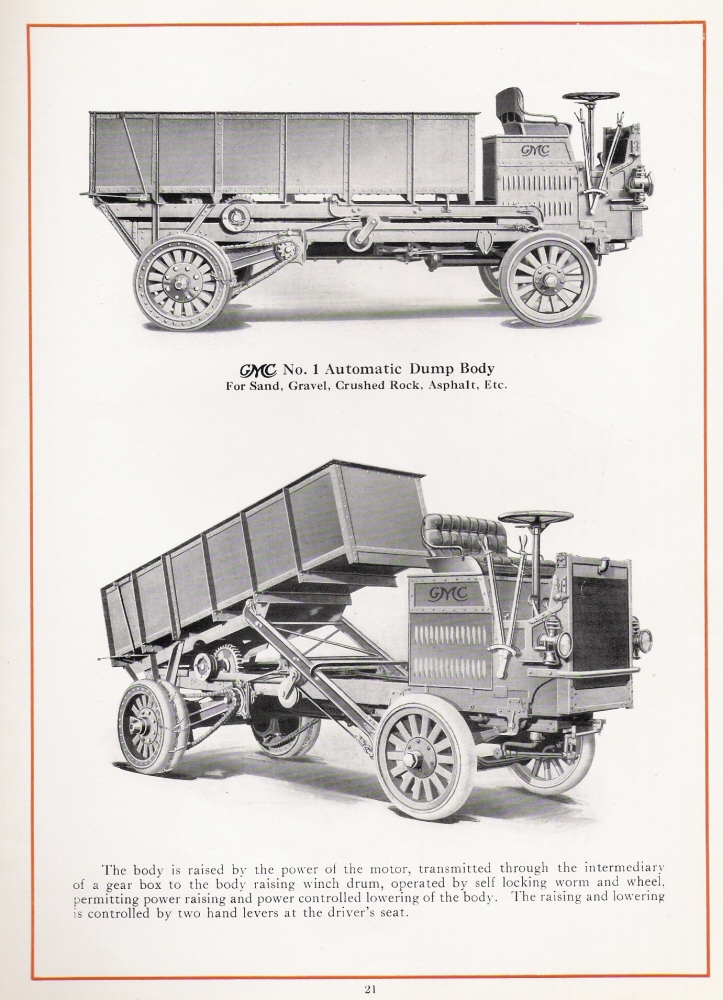
1913
Reliance moves to Pontiac, Michigan
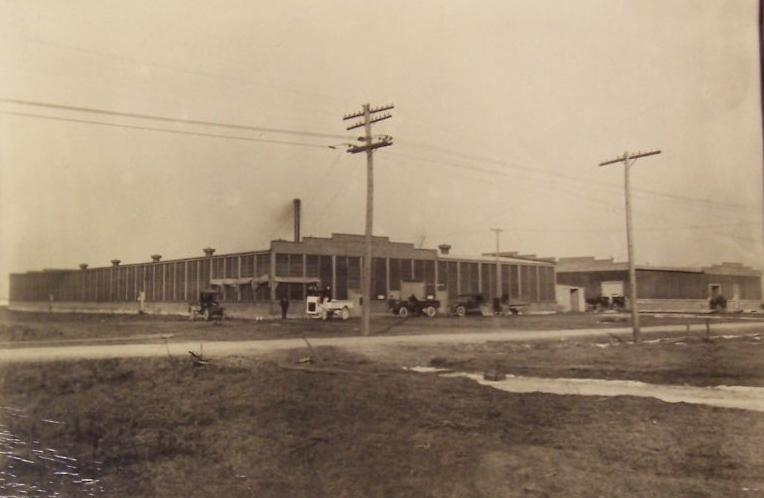
By October of 1913, the Pontiac plant was opened and a few of the Owosso employees moved to Pontiac. The earliest
GM production records indicate that in 1913, 601 trucks were built. Previous company records cannot be found.
Owosso would remain a quite little town that it is today and this would be a major turning point in the
history of Shiawassee County.
One can only speculate as to this move by the General Motors board. There
were several manufacturing concerns in the Owosso area, at that time, including Bentley's plant, Owosso
Manufacturing, who might have lost employees to a new employer due to the fact that GM paid more per hour.
Or perhaps, since Pontiac was located between Flint and Detroit, it seemed like the more logical location.
Some of the Reliance trucks left the Owosso factory with the GMC logo. Reliance trucks were later called the
Reliance model of the GMC truck line.
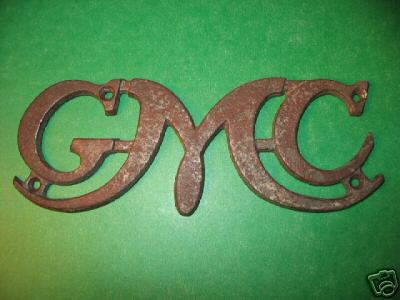
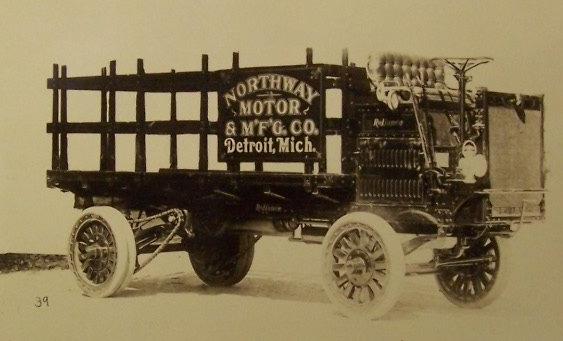
1913 Reliance
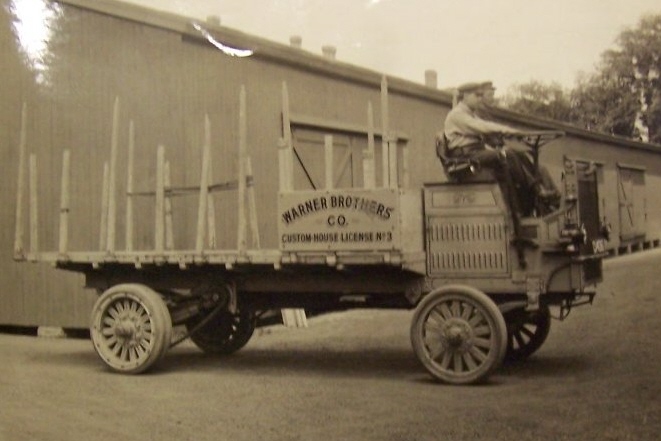
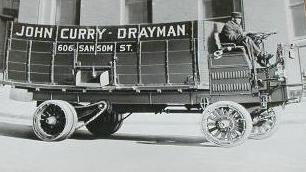
When the Pontiac plant opened, the name 'Reliance' became the name of the heavy duty model of the GMC line
until the fall of 1914. This Cab-Over model and the name 'Reliance' was then dropped completely and the
Reliance faded into history. Probably less than 1,000 Reliance Trucks were ever built in Owosso, a few
hundred 'Reliance Cab-Over' models in Pontiac and today only two are known to exist.
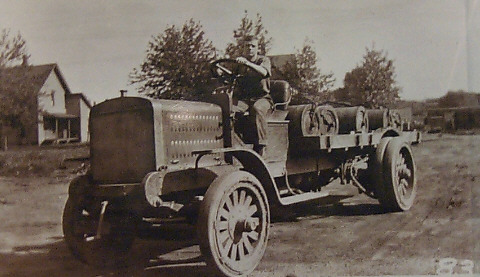
Testing at Owosso

N.C. Taylor, above was testing a new GM design.
The Michigan
license plate is a 1913.
G.M. started experimenting with heavy duty conventional style cabs, probably because with the Cab-Over design,
the steering wheel was at 8' high. So the driver was sitting very high, as was the center of gravity or it
appeared that way. The above photo shows a new truck being tested, notice the driver sits lower with the engine
placed forward and the the heavy weights on the bed. This photo was taken at the Owosso plant on Michigan Ave.
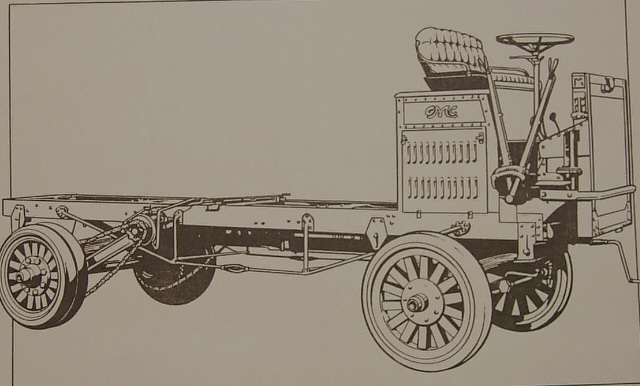
This photo shows a Pontiac, Michigan built GMC Truck, Reliance model, probably 1913. By the fall of 1914,
this Cab-Over design was eliminated and GM used a conventional style truck.
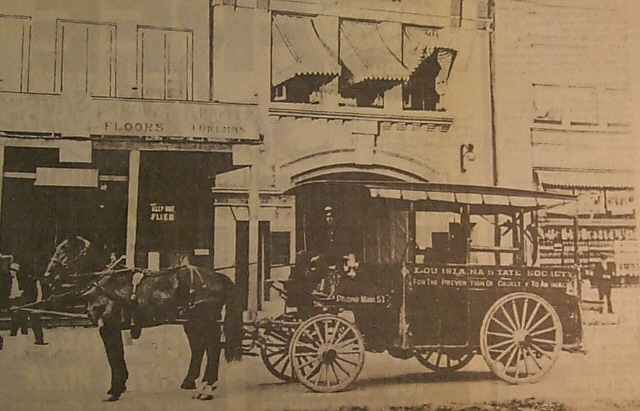
In October of 1912, this picture appeared in the Owosso Argus Press. "A handsome horse ambulance, built
by the Reliance Motor Truck Co. for the Louisiana Society for the Prevention of Cruelty to Animals is being
exhibited on the streets of Owosso today by the company." This photo was taken in front of the Ambulance
Station in New Orleans.
Below is the GMC truck plant in Pontiac, Michigan
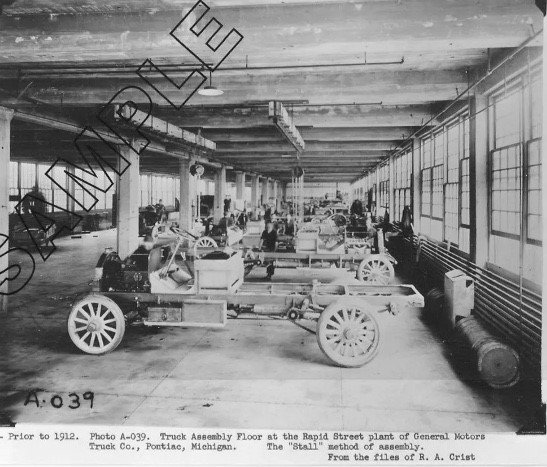
Below photo taken in about 1917
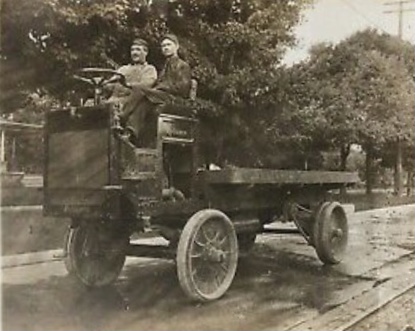
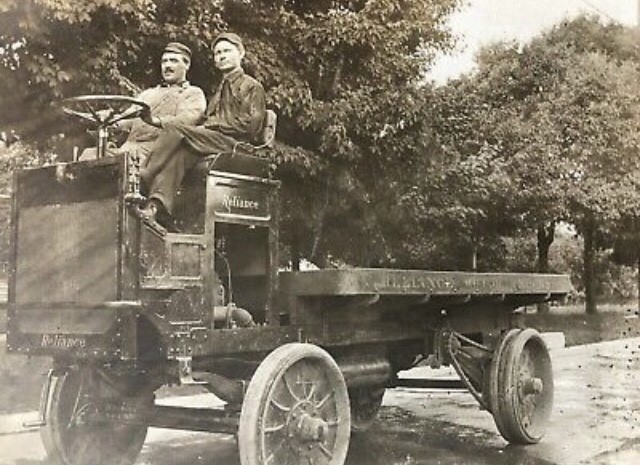
GMC Electric Trucks
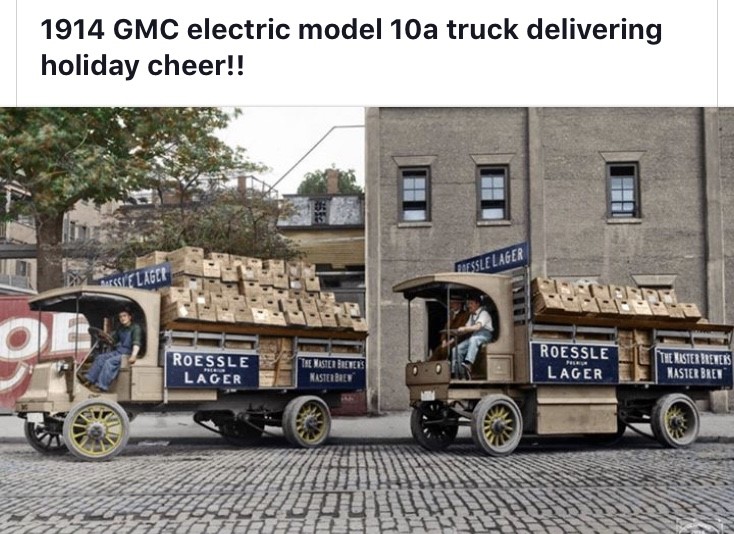
Below, a rare GMC Model 1-E elctric truck manufactured for Bethlehem Steel. Executives could be driven around
in comfort. It had a 1,000 lb. capacity. Photographed in front of LaSalle College.
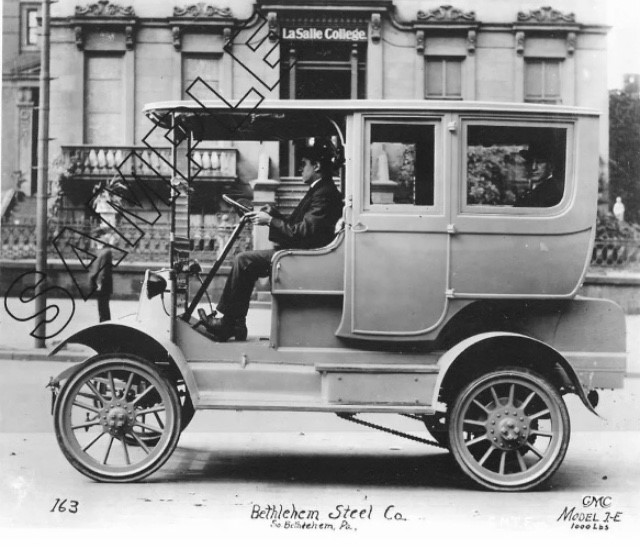
Steve Schmidt with his restored 1910 Reliance Truck in 1995.
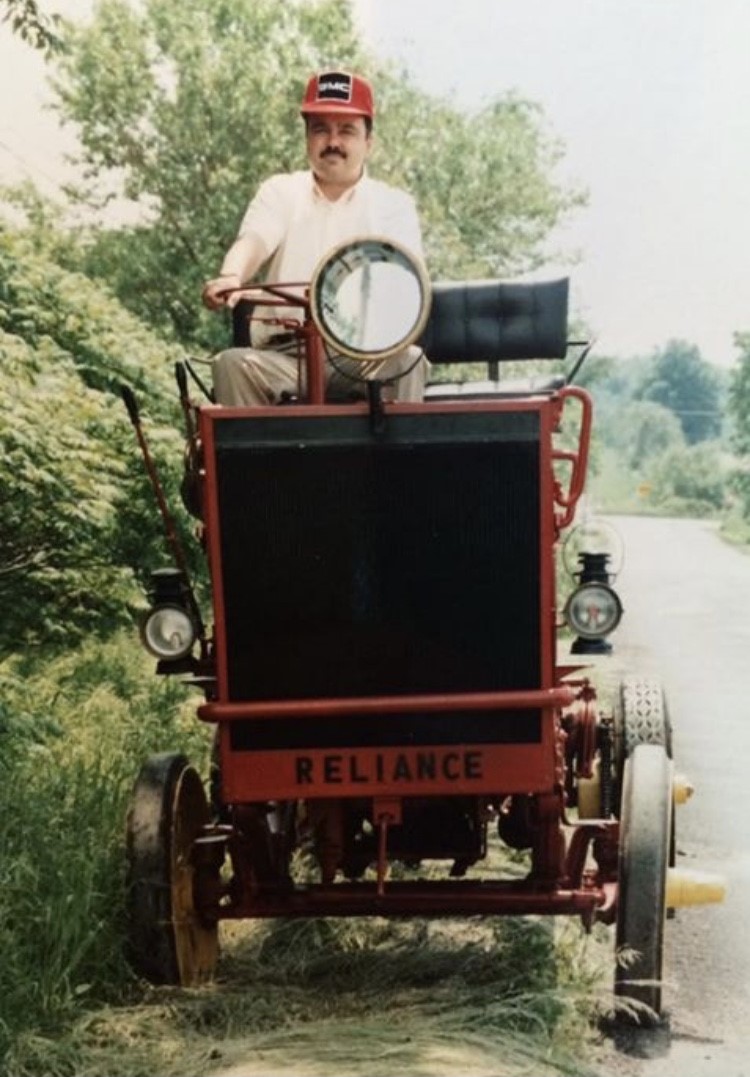
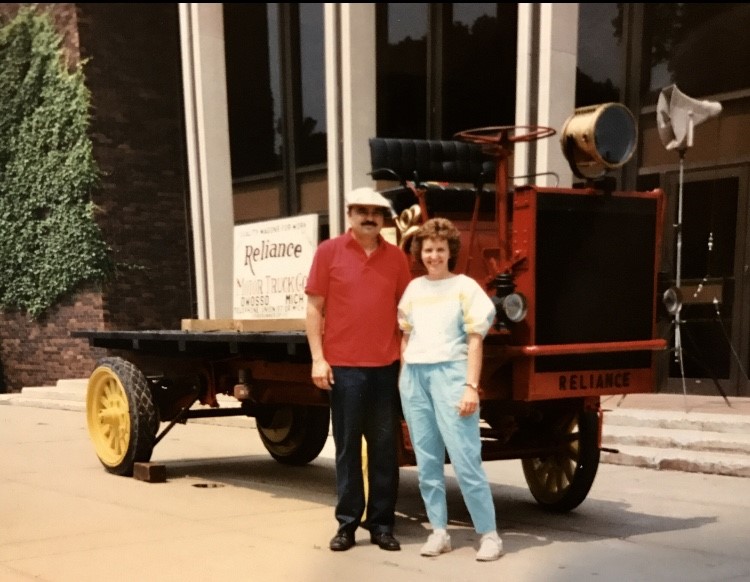
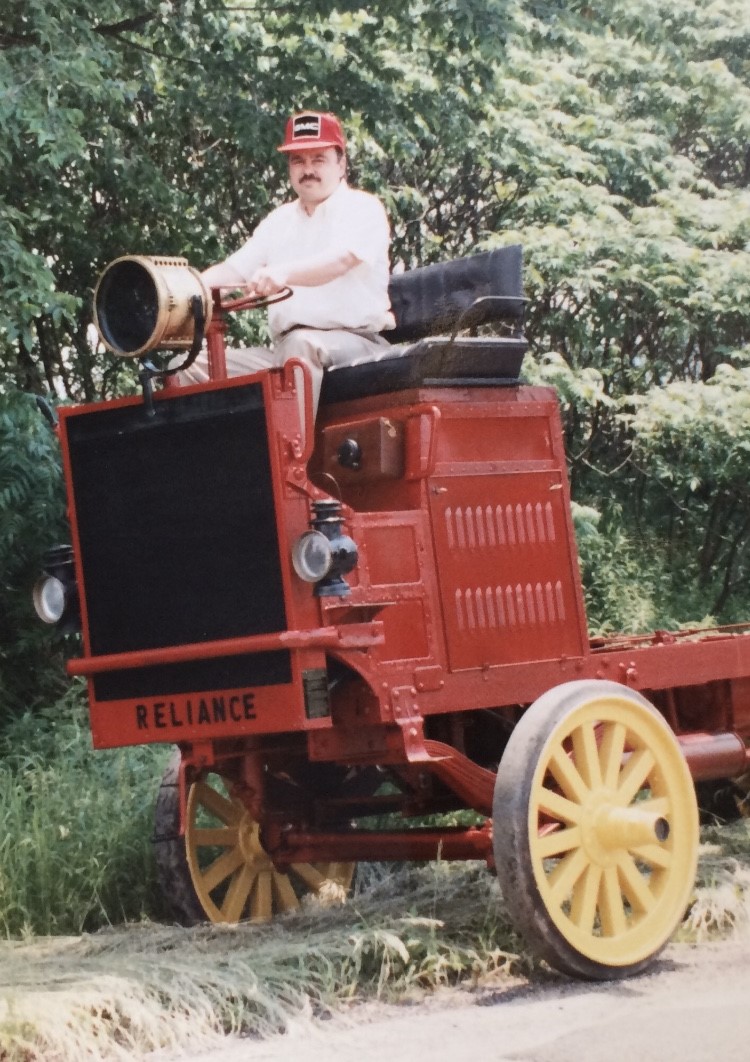
When the City of Owosso learned that G.M. was pulling out of town in about 1912, they were not happy as can be
imagined, as they had subscribed $30,000 toward the construction of a manufacturing plant. A.M. Bentley,
feeling somewhat responsible, quickly brought in a company to take over the facility called American Mallables.
This factory building was later extended from Michigan Ave. through to Washington St. Now the front of this
hugh building faced Washington St. Years later Mid-West Abrasive Co., who manufactured sand paper products,
occupied this site.
Important General Motors Dates
1897 - 1925
1897
Olds Motor Vehicle Company, Inc., the oldest unit of General Motors Corporation, is organized by Ransom
E. Olds with a capital of $50,000 (5,000 shares of stock at $10 per share) and the first Oldsmobile is produced.
1899
Olds Motor Vehicle and Olds Gasoline Engine Works of Lansing merge to form Olds Motor Works. This new
company is incorporated on May 8, 1899 with $500,000 capital. The first factory specifically for automobile
manufacture in the United States is built by Olds in Detroit on Jefferson Avenue East.
In Germany, Adam Opels first motorcar, the "Opel-Patent-Motorwagen System Lutzmann," is built.
1901
The curved-dash Oldsmobile becomes the first American car to be manufactured in quantity.
1902
Cadillac Automobile Company is organized in Detroit by Henry M. Leland, a precision manufacturer of
automotive components.
1903
Buick Motor Company, founded by David Dunbar Buick, is incorporated on May 19,1903. Ground is broken
for the first Buick engine plant on September 11, 1903, with funding from Flint Wagon Works, and operations are
moved from Detroit to Flint.
1904
William Crapo ("Billy") Durant of Durant-Dort Carriage Company, Flint, Michigan, takes control of
Buick Motor Company on November 1, 1904.
1905
Cadillac produces the Osceola, a single cylinder favorite of Henry Leland and the first step-in
closed-car design. The body was built under the supervision of Fred J. Fisher (who later founded Fisher Body with his brothers) in the Wilson Body Company plant in Detroit.
1906
Buick builds its first production four-cylinder car, a 1907 Model D.
1907
Henry M. Leland establishes the Cadillac School of Applied Mechanics, the first school to train
machinists, technicians and toolmakers.
The Oakland Motor Car Co., predecessor to Pontiac Motor, is founded by Edward M. Murphy on August
28, 1907 in Pontiac, Michigan.
1908
General Motors Company is organized in 1908 (Sept 16), incorporating the Buick Motor Company.
Oldsmobile becomes the second company to join General Motors when Olds Motor Works is sold to GM
on Nov. 12, 1908
Fisher Body Company is incorporated on July 22, 1908, by Albert, Fred and Charles Fisher and
located in Detroit.
Cadillac single cylinder wins the Dewar trophy of the Royal Automobile Club in London for demonstrating
interchangeability of parts, a basic element in mass production.
1909
General Motors purchases a half interest in Oakland Motor Car Co. on January 20,
1909. When its founder, Edward Murphy, passes away the following summer, his company comes under the full
control of General Motors. In 1932, the Oakland name is dropped from the vehicle line and Pontiac becomes
the name of the division.
General Motors purchases Cadillac for $5.5 million on July 29, 1909. Henry M. Leland and his son,
Wilfred, are invited to continue operating Cadillac. They do so until 1917, when they leave to form Lincoln
Motor Co.
AC Spark Plug joins GM. Known as Champion Ignition Company in 1909, the name is changed to AC Spark
Plug Company in 1922 and made a division in 1933.
General Motors acquires the Rapid Motor Vehicle Company of Pontiac, Michigan, the predecessor of
GMC Truck, and Reliance Motor Truck Co. of Owosso, Michigan. A Rapid becomes the first truck to conquer Pikes
Peak in 1909.
Bankers turn down William Durants request for a loan to buy Ford Motor Co. for about $9.5 million.
1910
Cadillac is the first American manufacturer to offer closed bodies as standard equipment,
revolutionizing motoring convenience by providing cleanliness and all-weather comfort. In exchange for the
loans required to avoid financial collapse, bankers step in and William Durant is removed from management of
General Motors.
1911
GM President James J. Storrow creates a centralized testing and research laboratory and technical
department to serve all constituent companies on February 7, 1911. At first known as the Engineering Department,
in November it becomes the General Motors Research Department.
Charles F. Ketterings milestone invention, the electric self starter, is first installed in a
Cadillac on February 27, 1911. Kettering had organized his company, the Dayton Engineering Laboratories
Company, in 1909 for the purpose of working on developments in the automotive field.
General Motors Truck Company (later known as GMC) is organized on July 22, 1911, to handle sales
of GMs Rapid and Reliance products.
Chevrolet Motor Company of Michigan is incorporated in November of 1911 by Louis Chevrolet,
William Little and Edwin Cambell, William Durants son-in-law. Headquarters are in Detroit.
General Motors Export Company is established to handle the sale of all General Motors products
outside the U.S. and Canada. 1912
Cadillac adopts the electric self-starter as standard equipment. Cadillacs self-starter wins
the Dewar Trophy as the most important automotive contribution of the year. 1913
All GM truck operations are consolidated in Pontiac, Michigan. 1914
Cadillac is first manufacturer in the U.S. to produce a V-type, water-cooled, eight-cylinder
engine. The 314-cubic-inch engine produces 70 horsepower at 2,400 RPM and is the first major step in
development of high-speed, high-compression automotive engines.
Cadillac becomes the first in the auto industry to use thermostatic control of a cooling system.
1915
Cadillacs V-8 engine is installed in all its models and the V-8 emblem is added to Cadillac designs.
On September 13, 1915, Durant incorporates Chevrolet Motor Co. of Delaware. The new corporation
includes the original Chevrolet Motor Company and becomes a holding company for auto companies Durant had
put together after losing control of GM.
At the November 16, 1915 stockholders meeting of General Motors Company, Pierre S. Du Pont is
elected chairman. William Durant, having held on to all his stock and acquiring more in the interim since
his departure from GM (and receiving a $50 dividend on each share), is back in a position of power.
Tilt-beam headlights operated by a handle on the dash are introduced on Cadillac for improved
nighttime visibility.
1916
In May 1916, Durant creates United Motors Corp., a combination of five parts and accessories
manufacturers that include Hyatt Roller Bearing, led by Alfred P. Sloan, and Dayton Engineering Laboratories,
led by Charles F. Kettering. Sloan is named president of United Motors.
Durant announces that Chevrolet owns 54.5 percent of GMs outstanding shares and takes over the GM
presidency from Charles W. Nash, who had been GM president from 1912 to 1916.
General Motors Corporation is incorporated under Delaware law (Oct. 13) and acquires all stock of
General Motors Company.
1917
Durant purchases an interest in the Samson Sieve-Grip Tractor Co. of Stockton, California.
The following year he recommends that GM enter the farm equipment business and directors approve purchase of
Durants interest as well as acquisition of the rest of the company. In 1922, Samson Tractor, by now a division
of General Motors, is liquidated because it is unprofitable.
1918
General Motors buys the operating assets of Chevrolet Motor Company in May.
United Motors Corporation (UMC) becomes part of General Motors Corporation. UMC is dissolved in
1919 and individual businesses continue as part of General Motors. United Motors Service, Inc., created by
Sloan in 1916 to handle sales for the UMC manufacturing divisions, is included in this acquisition and
becomes a division of General Motors in 1944. In 1971 United Motors Service Division is renamed United
Delco Division and in 1974 it is absorbed into AC-Delco Division.
General Motors of Canada, Ltd. is formed through merger of McLaughlin Motor Car Company, Ltd.
and Chevrolet Motor Company of Canada, Ltd.
Durant invests personally in Guardian Frigerator, a company trying to manufacture a new product,
an electric ice box.
1919
General Motors acquires 60% interest in Fisher Body Company.
General Motors Acceptance Corporation is established to finance the sale of General Motors cars
and trucks.
Construction of the General Motors Building in Detroit begins.
The predecessor of General Motors Institute of Technology opens at Flint as part-time training
school.
The Guardian Frigerator Company changes its name to Frigidaire Corporation. General Motors
Corporation purchases all of the outstanding stock on May 31, 1919.
General Motors purchases Dayton Wright Company, an early airplane manufacturer. In 1929, its
assets are sold to Fokker Aircraft Corporation.
All General Motors employees in the US are made eligible to participate in the GM Savings and
Investment Plan (predecessor to the Savings-Stock Purchase Program, established in 1955). Employees
contributions of up to $300 per year are matched by a GM contribution of $.50 for every dollar that
employees invest in the plan. The plan is discontinued in 1935.
1920
General Motors Research Corporation, predecessor of GM Research Laboratories, is established.
GM Exports first Far Eastern branch office opens in Manila (moved to Shanghai in 1922).
Durant resigns as President of General Motors and Pierre S. du Pont, then Chairman of the Board,
is named President.
1921
The Clark Street Cadillac factory begins production. At the time, it is the most modern plant in
the industry. It remains in production until 1987.
Pierre du Pont issues GMs first "Message to Shareholders."
GM decides to proceed with commercial application of Ketterings "copper-cooled" engine, intended
to replace the traditional piston engine. The initial target is to put the copper-cooled engine in all of
Chevrolet Divisions cars. The program is officially ended in 1923, with a total of fewer than 800 copper-cooled
engines ever being produced and only 300 sold to dealers, all of which are recalled by GM.
1923
Alfred P. Sloan is elected President and Chairman of the Executive Committee May 10, 1923, following
a meeting of the Board of Directors.
Four-wheel brakes are introduced on 1924-model year Buicks.
Ethyl gasoline, developed in General Motors Research Laboratories, goes on sale. The following year,
Ethyl Gasoline Corporation is formed by General Motors and Standard Oil Company of New Jersey to market this
"knockless" motor fuel component developed by General Motors Research Laboratories.
Inland Manufacturing Company of Dayton, Ohio, is established to produce steering wheels for GM cars.
GMs first European assembly plant is established in Copenhagen under the name General Motors
International A/S. It is to build Chevrolets for sale in Scandinavian countries, the Baltics, and Germany,
Poland, Czechoslovakia, Austria, Hungary and Russia. The first GM vehicle assembled outside the U.S. and
Canada, a Chevrolet utility truck, comes off the Copenhagen assembly line on January 7, 1924.
GM acquires all outstanding stocks of Brown-Lipe-Chapin Company of Syracuse, NY, a manufacturer
of automobile differentials and gears.
Executives become stockholders under a plan allowing them to acquire stock through the Managers
Securities Company. This is the most far reaching effort yet made by a large corporation to align interests
of management and stockholders through having leaders become large stockholders themselves.
1924
Alfred Sloan articulates GMs product strategy of "A car for every purse and purpose" in his
Message to Shareholders in the 1924 Annual Report.
General Motors Proving Ground is opened in Milford, Mich.
William S. Knudsen becomes president of Chevrolet and joins the GM Board of Directors.
GM Continental is established with operations in Antwerp, Belgium.
Donaldson Brown develops his financial concept of "the highest return consistent with attainable
volume in the market" and publishes his landmark article, "Pricing Policy in Relation to Financial Control."
1925
Yellow Truck and Coach Manufacturing Company is organized, with General Motors Truck as a subsidiary
and General Motors Corporation holding a large interest.
Vauxhall Motors Ltd., Luton, England, is acquired by General Motors.
General Motors do Brasil is established in Sao Paulo.
GM opens a manufacturing facility Buenos Aires, Argentina. In 1978 the vehicle manufacturing
operations are discontinued and GM Argentina S.A. is liquidated. In 1993, GM de Argentina S.A. is established
as a joint venture with CIADEA with production in Cordoba. GM acquires full ownership in builds a new plant
in Rosaria which commences production in 1997.
G.M. Peninsular is established in Malaga, Sapin, as General Motors Export Divisions first warehouse.
General Motors (France) is organized with a sales office in Paris and warehouse in Le Havre.
General Motors G.m.b.H. is set up in Berlin as a sales office. In 1927 an assembly plant is built
in Berlin.
General Exchange Insurance Corporation (predecessor of Motors Insurance Corporation) is organized
by General Motors to handle insurance business arising through sales financed by GMAC.
Last Update: 1-09-24......
This is a personal website owned by Steve Schmidt.
Copying any photos and information is prohibited.
Copyright 2024 © All rights reserved
Shiawassee County History































































 Below, 1909
Below, 1909












































